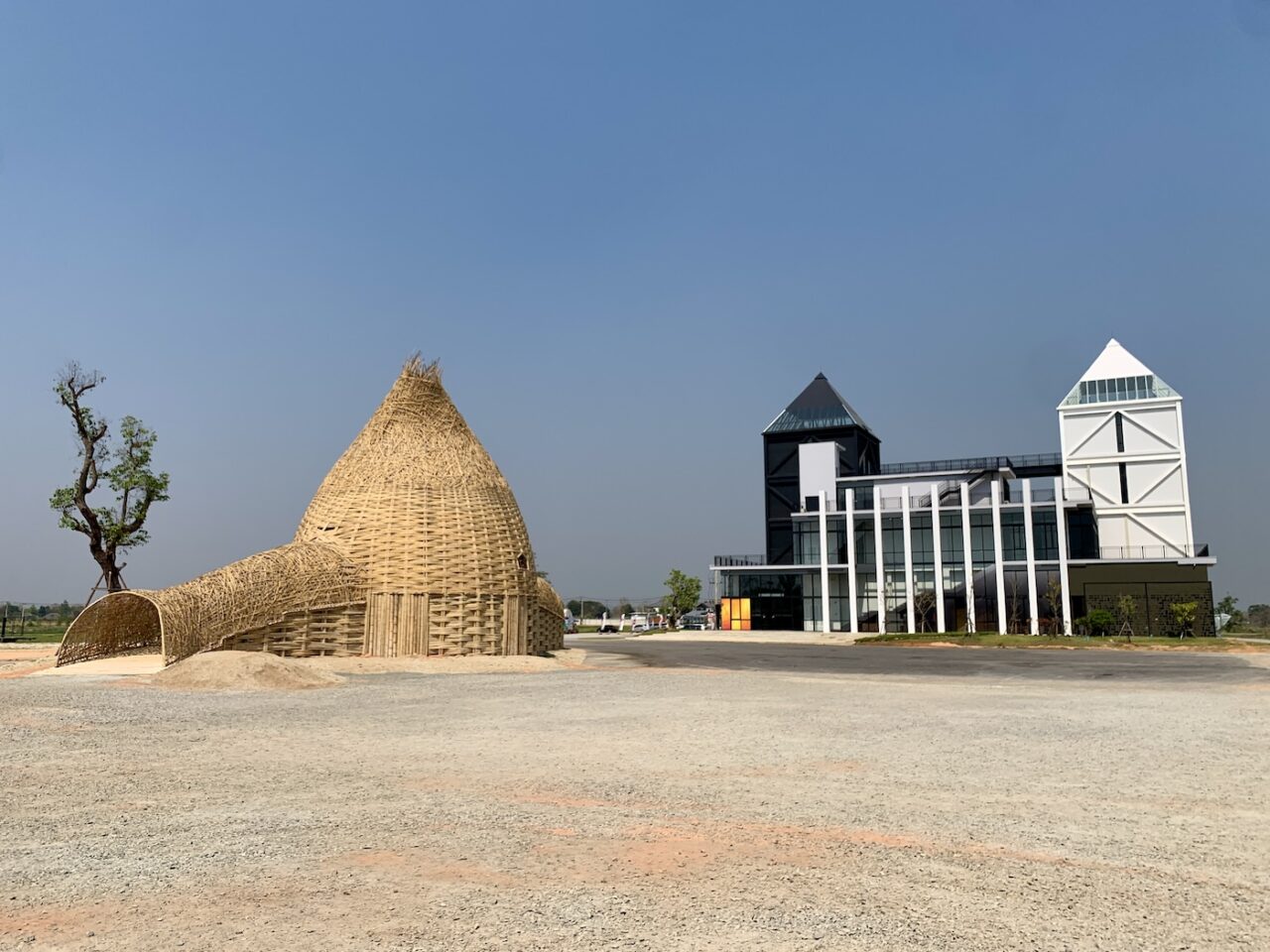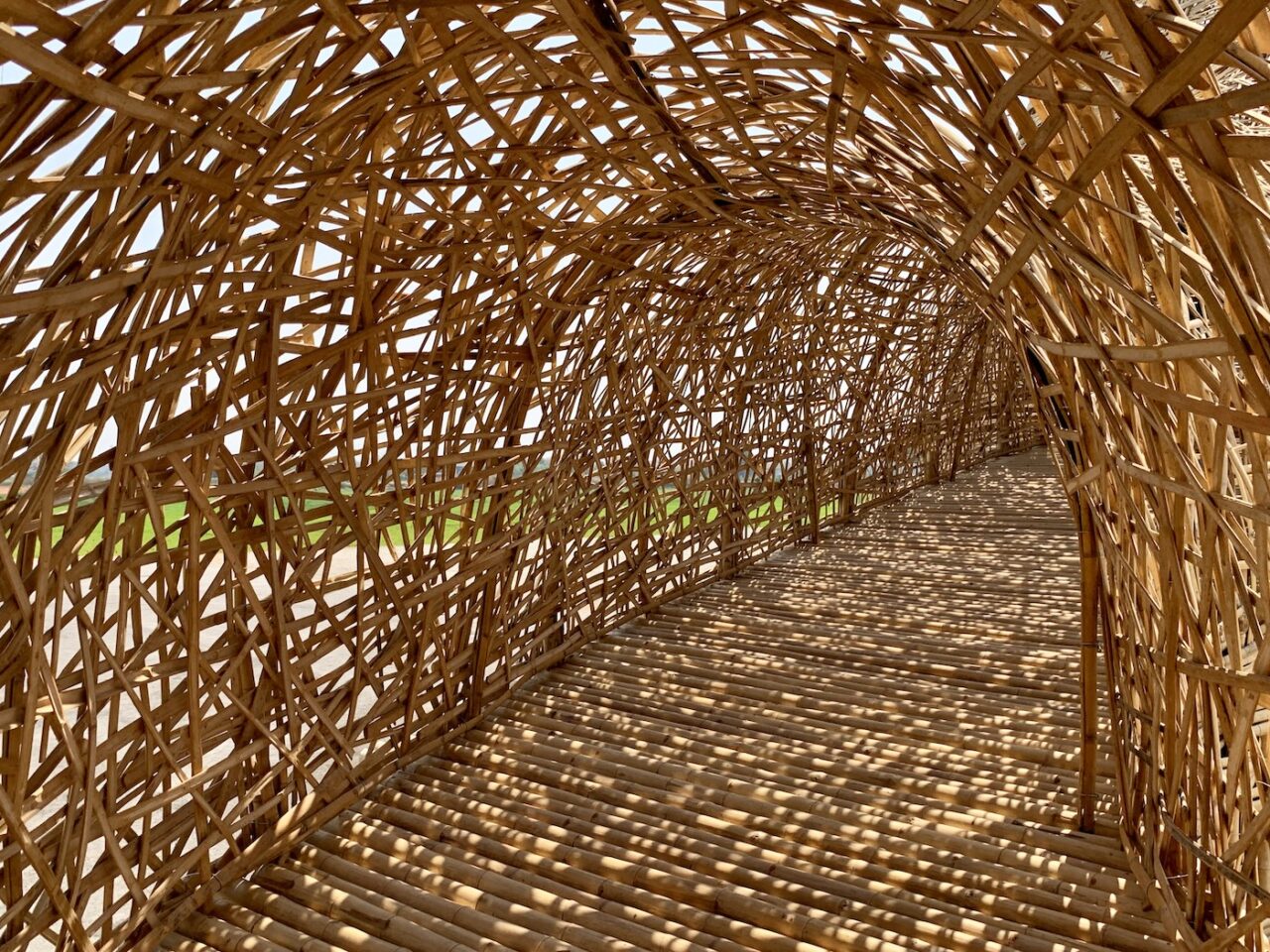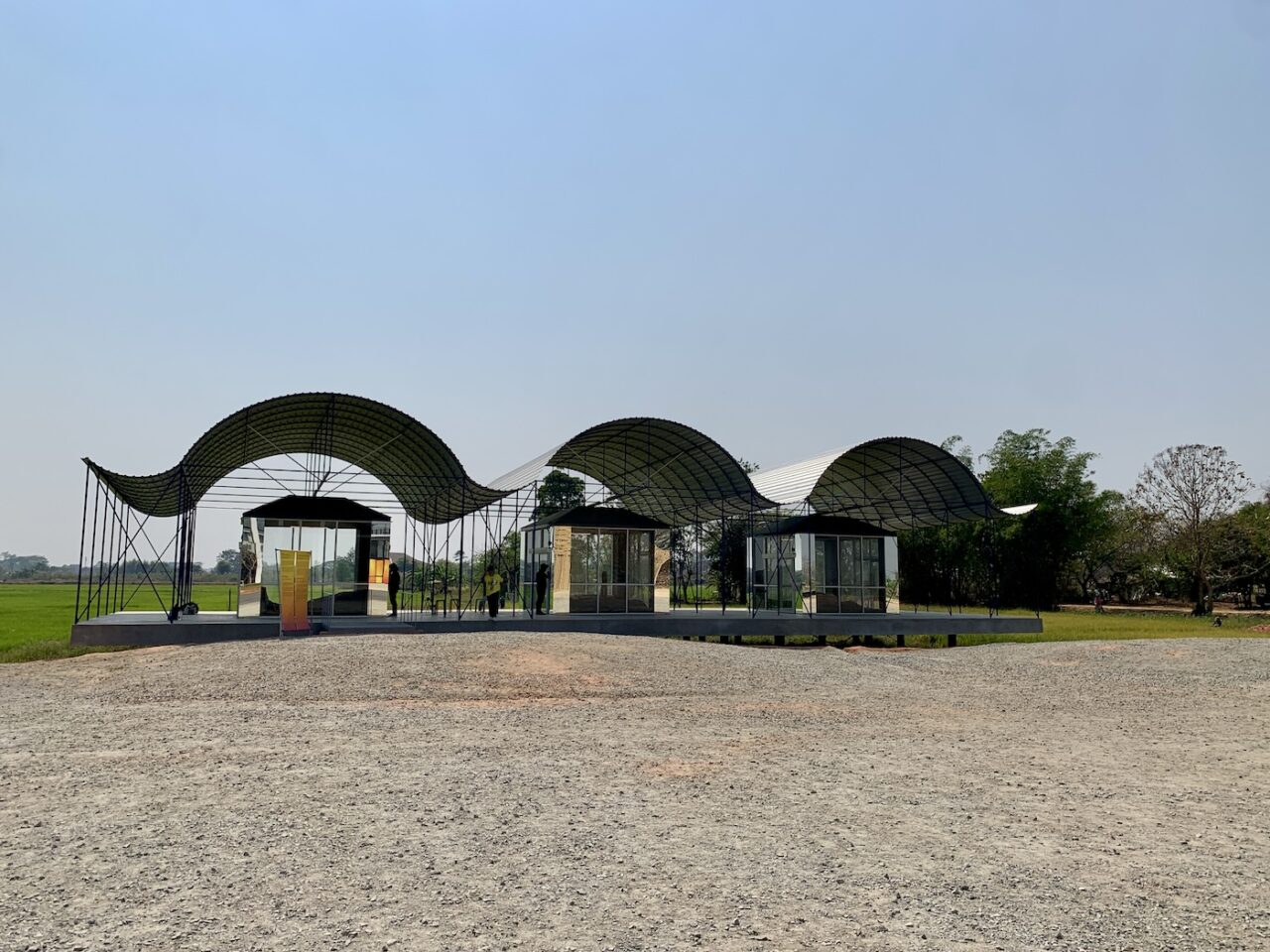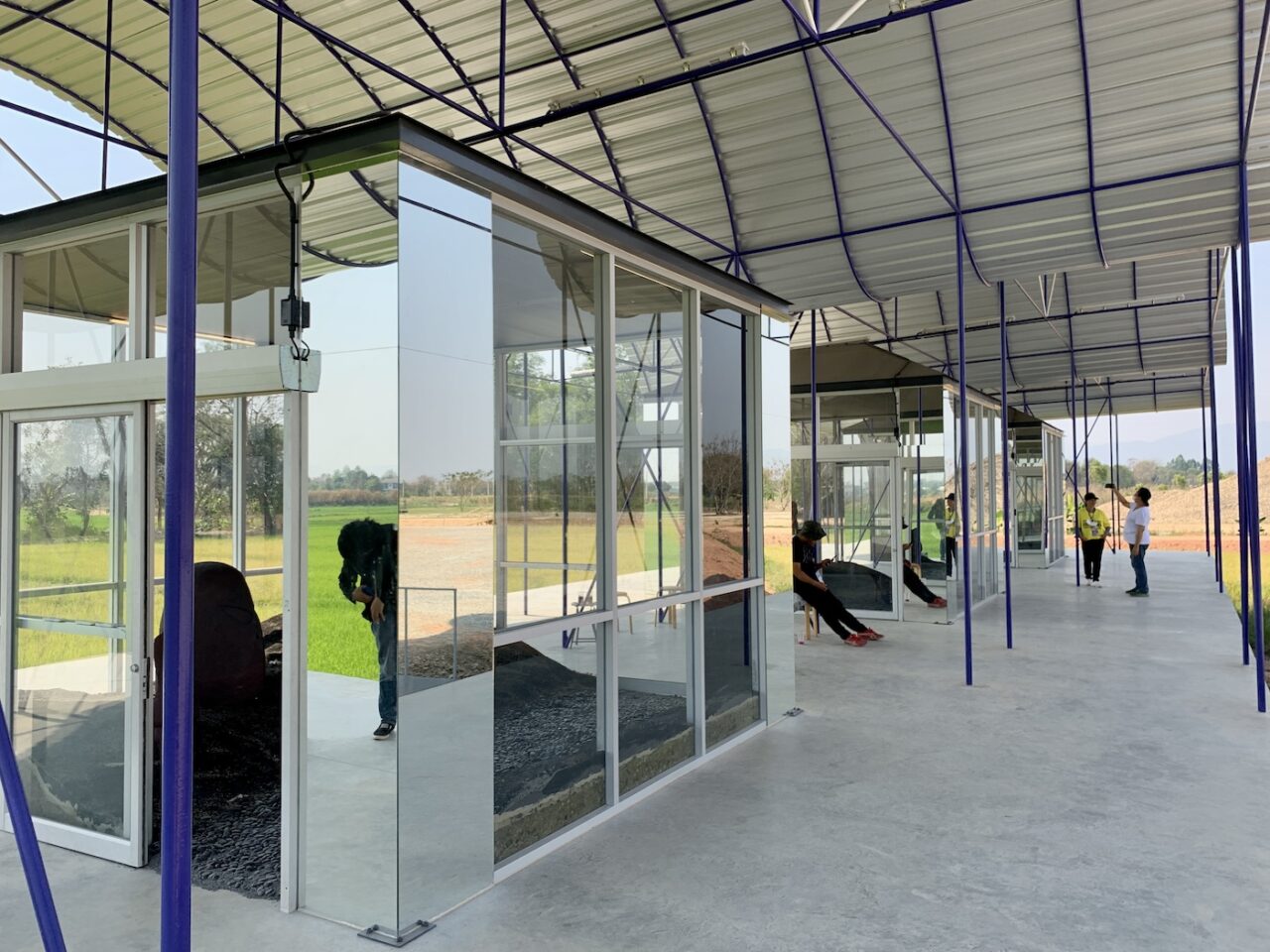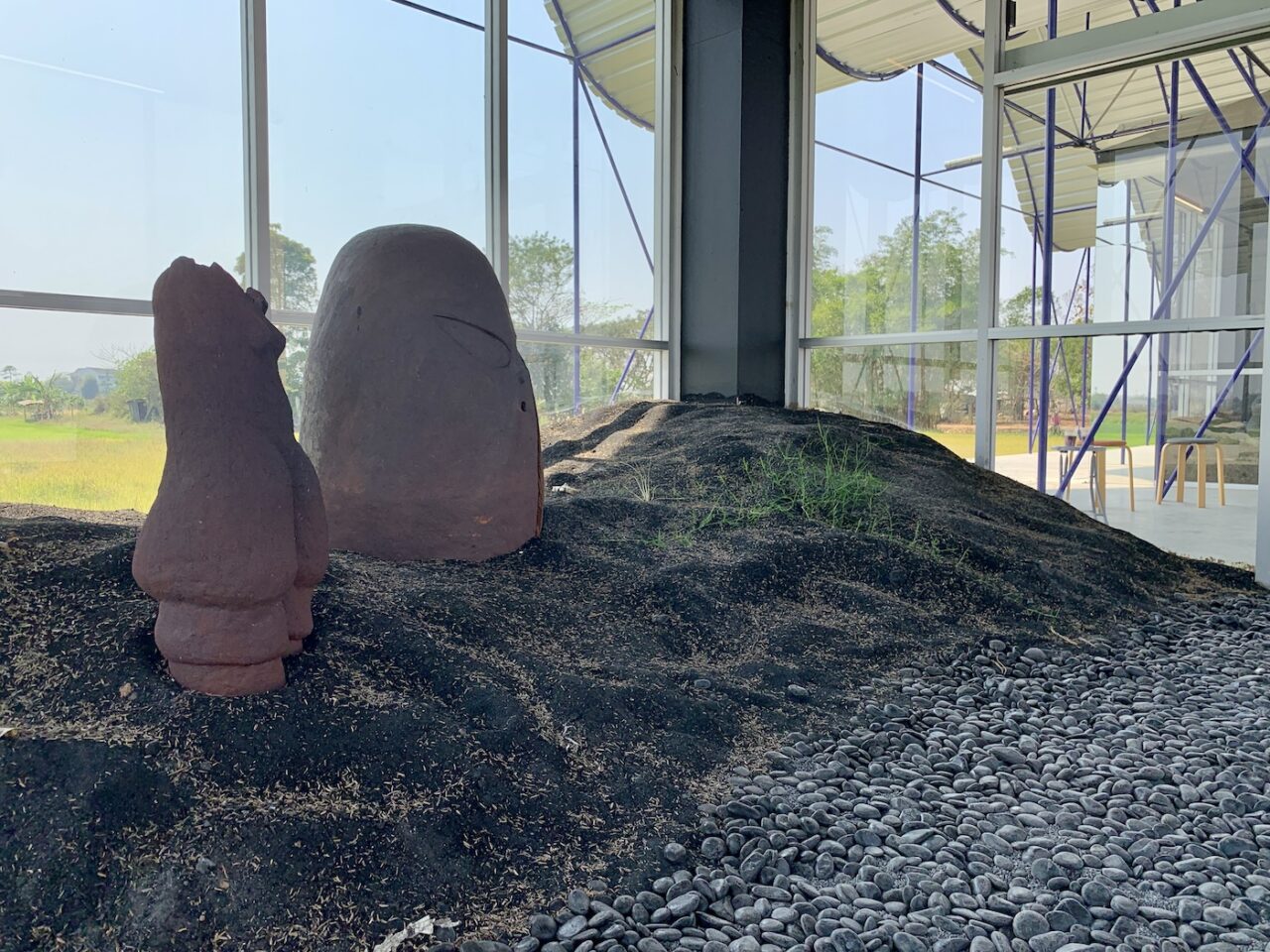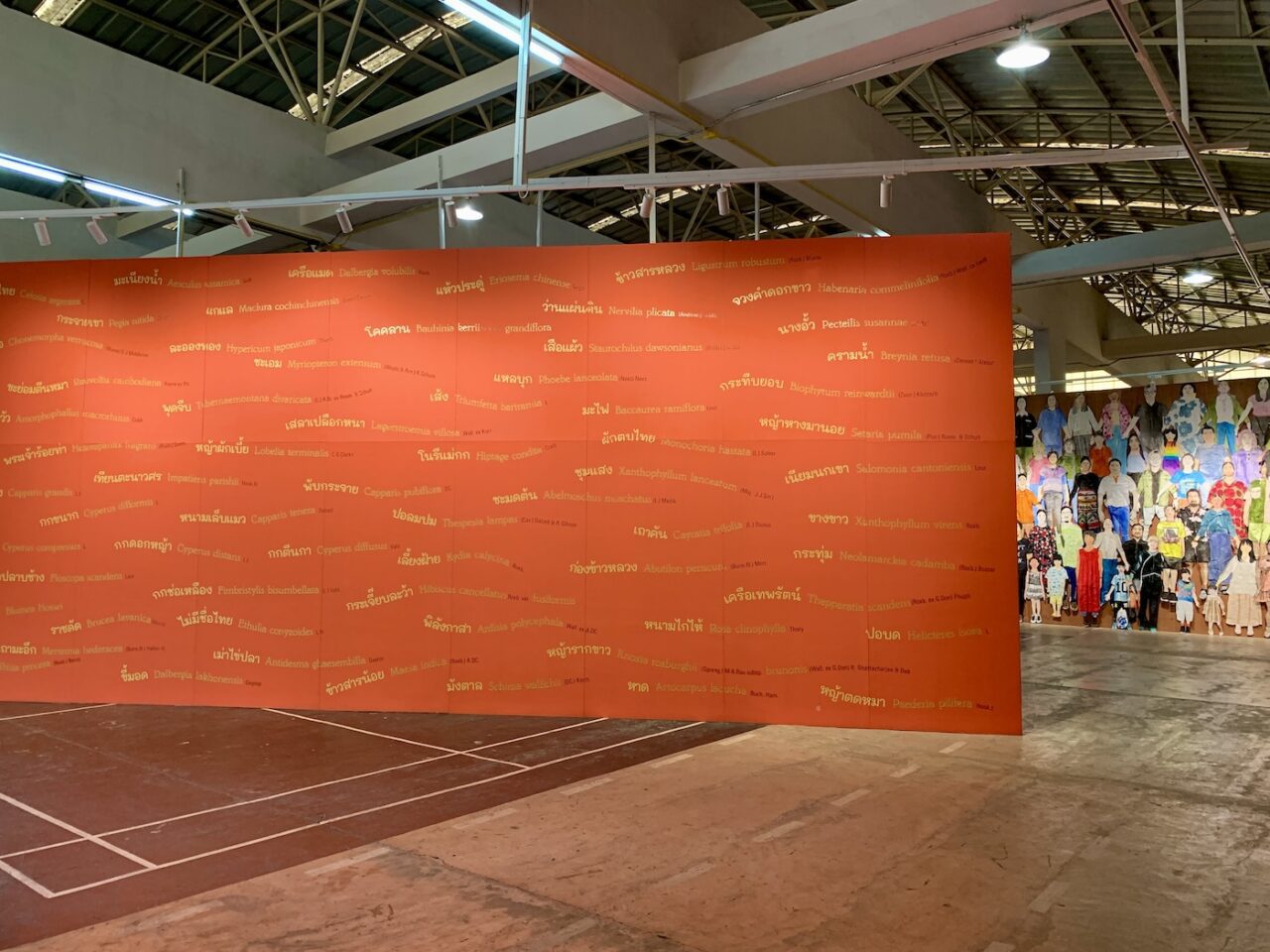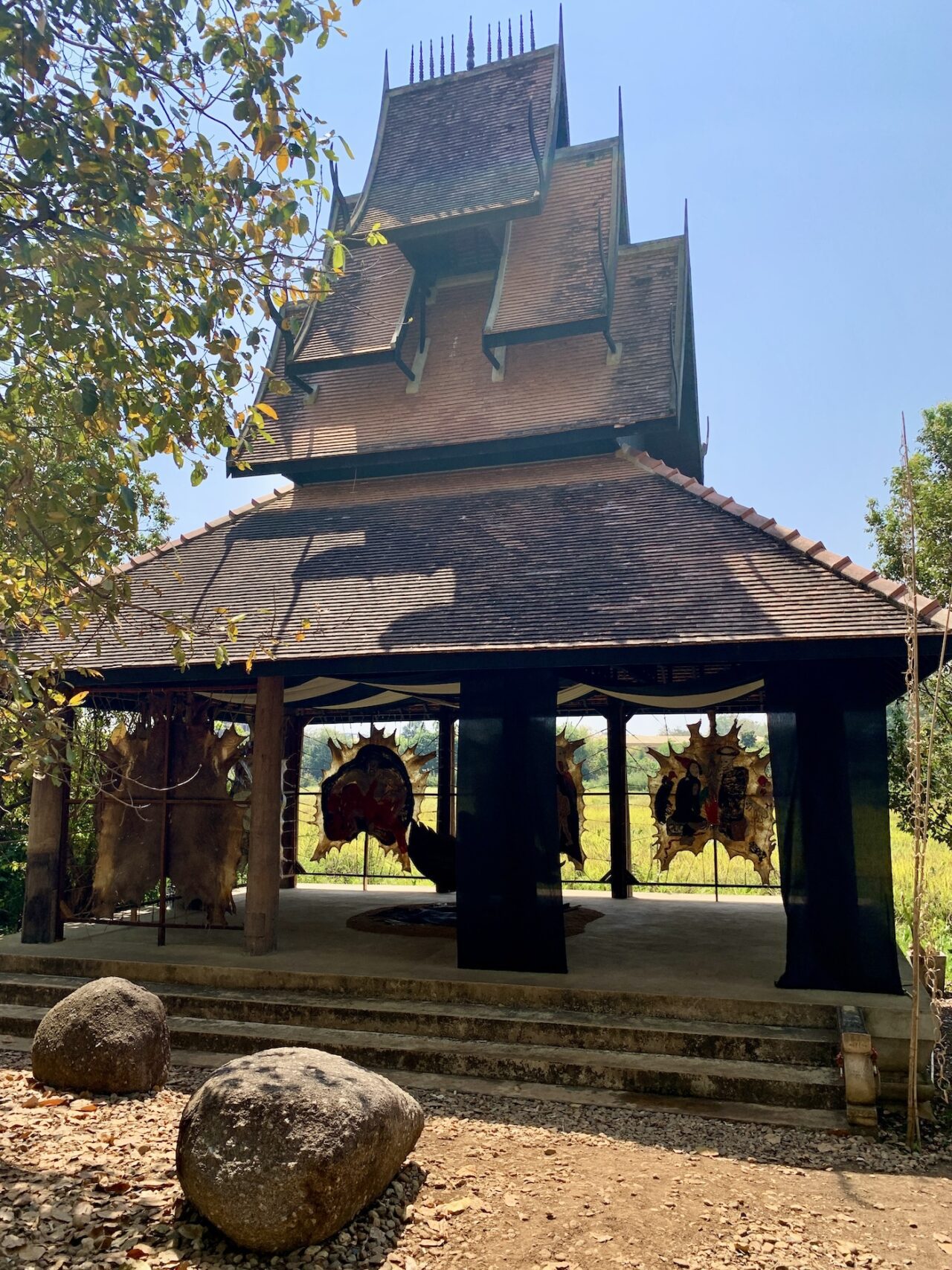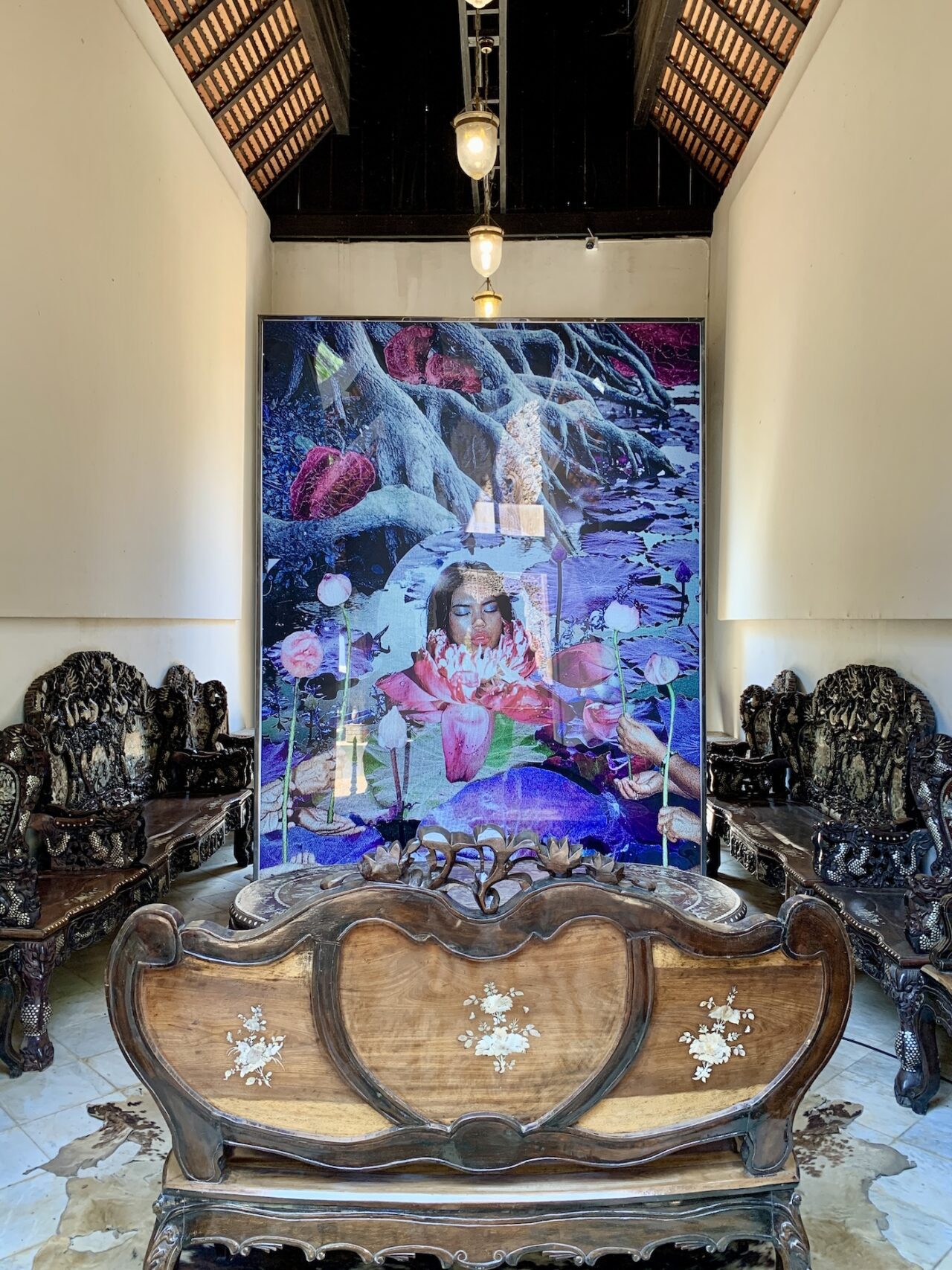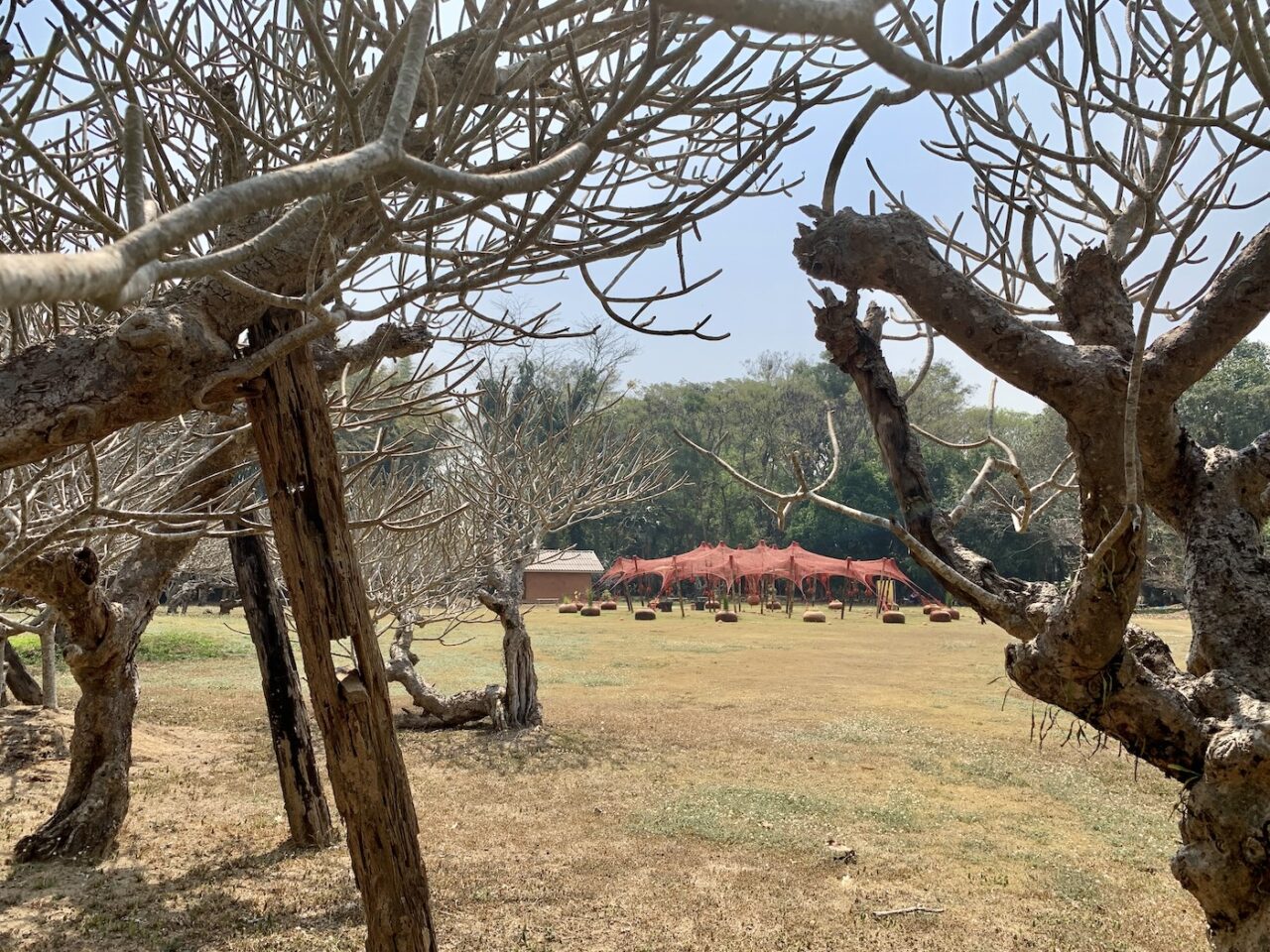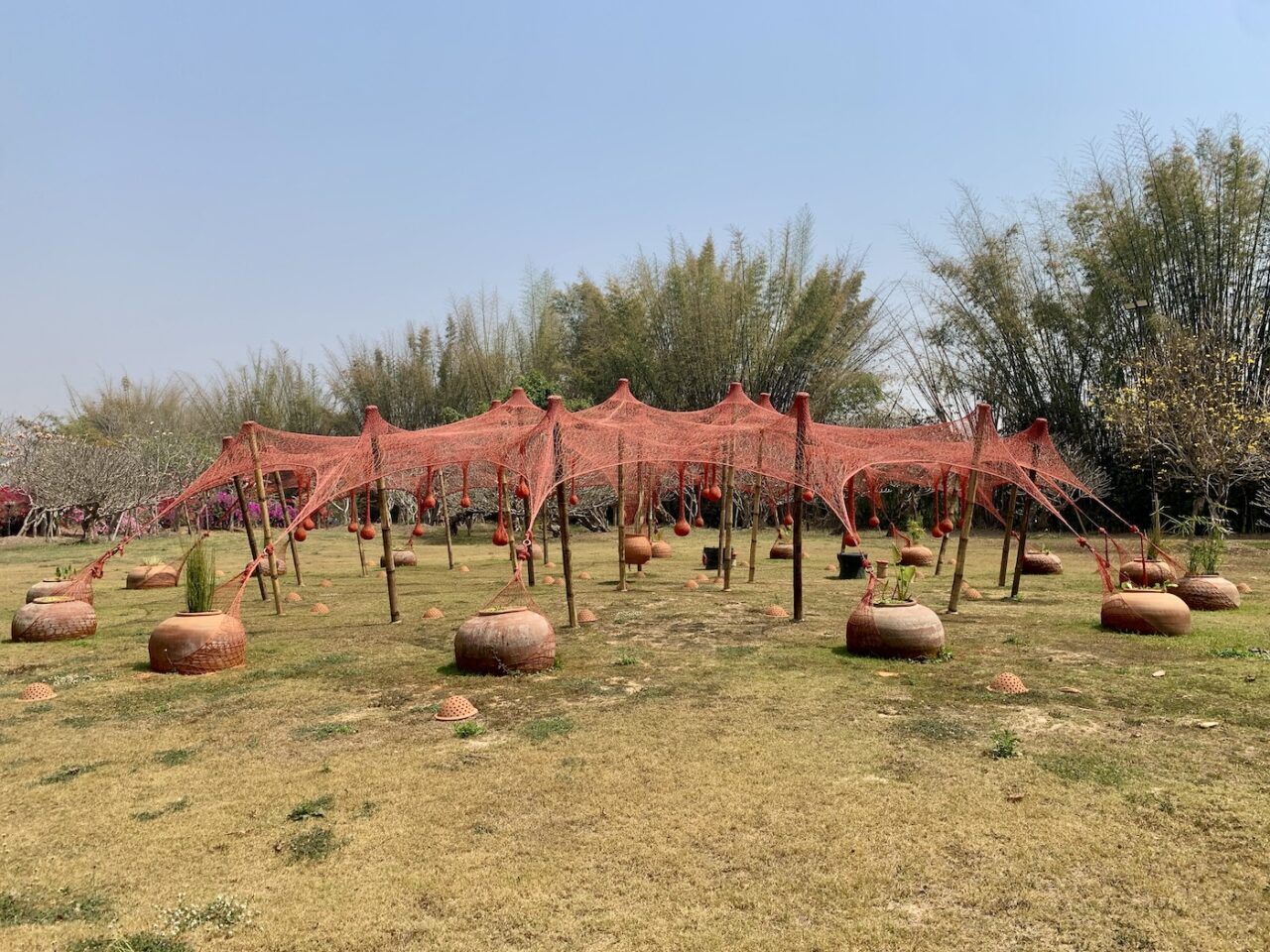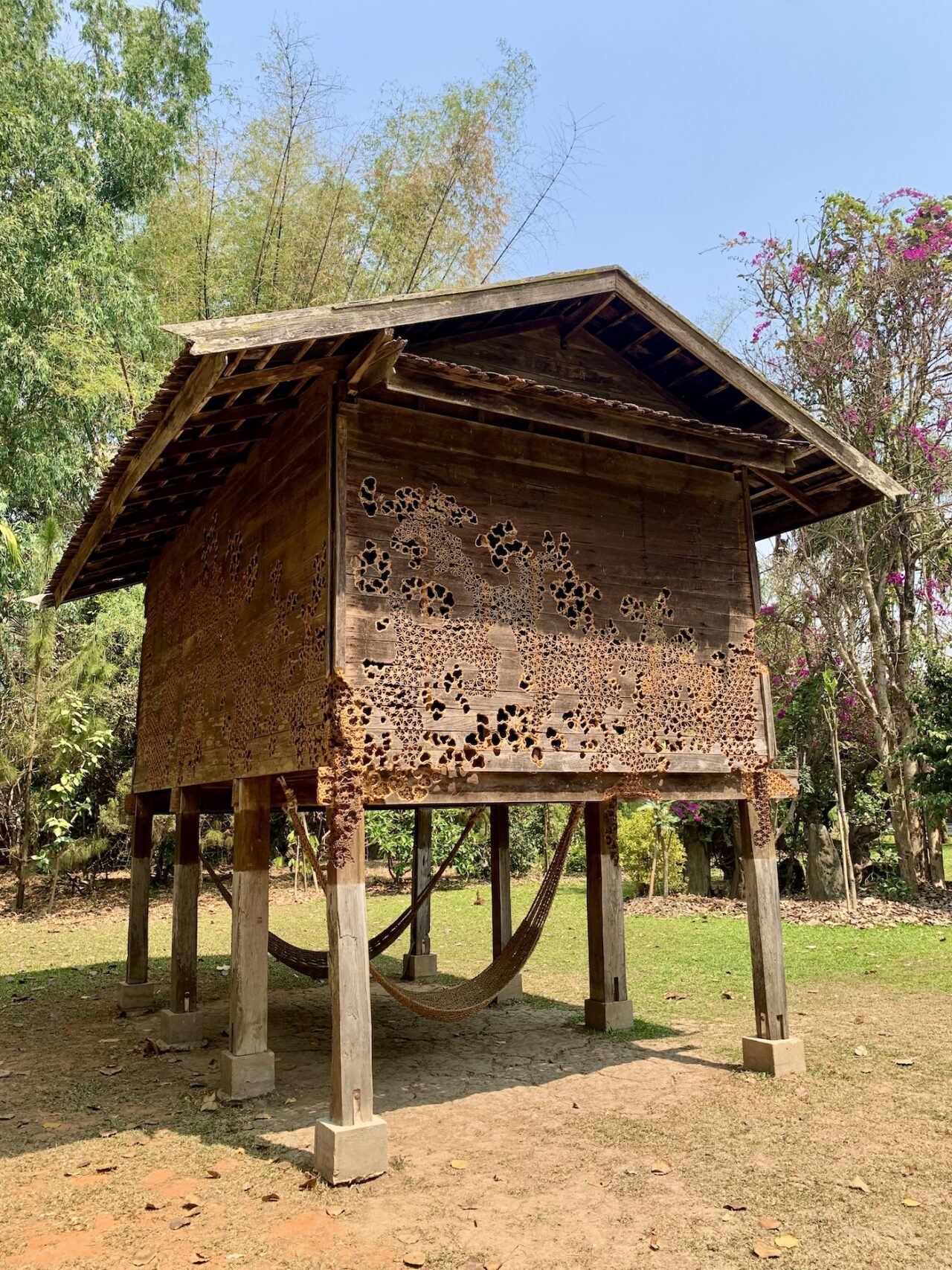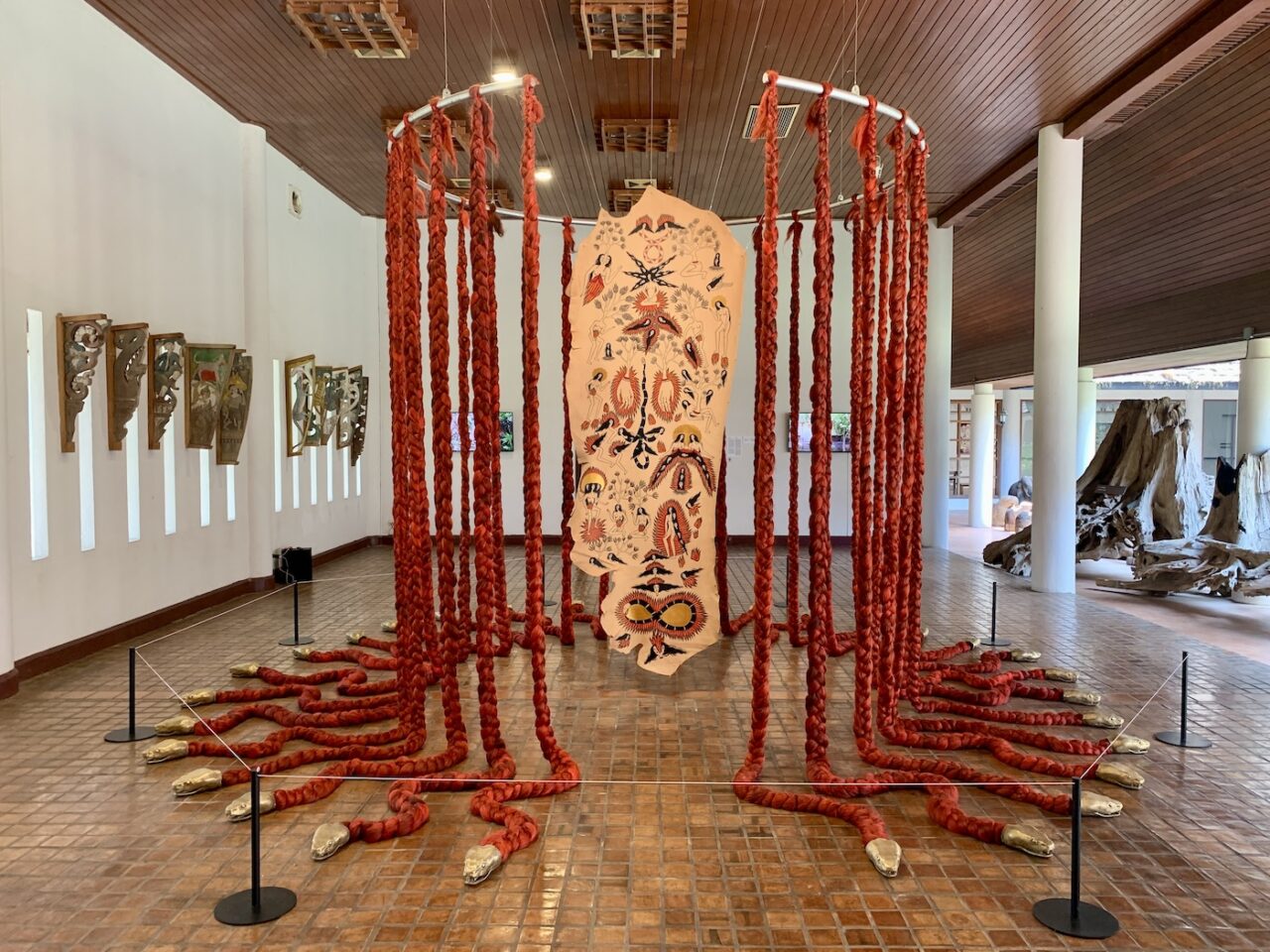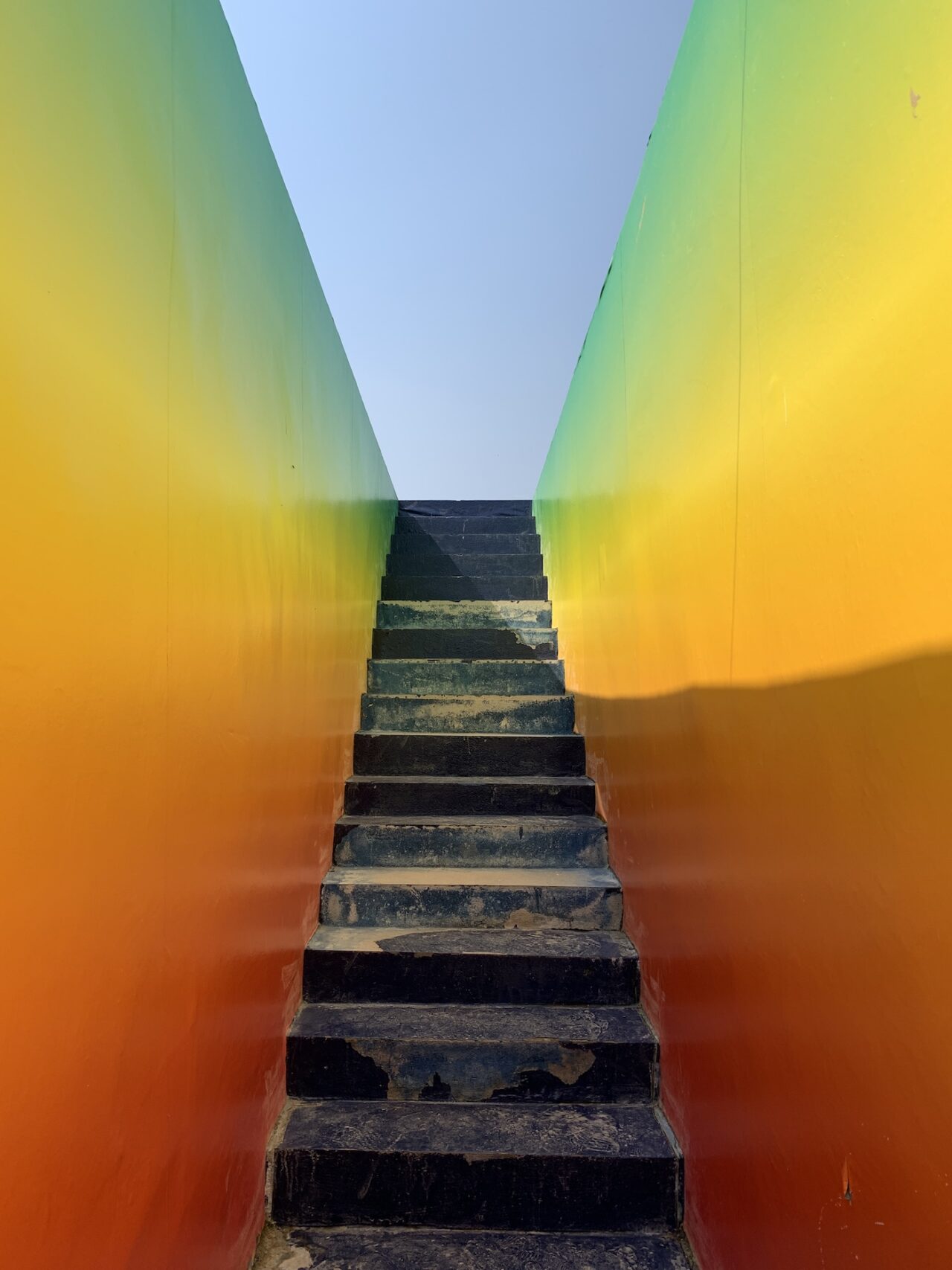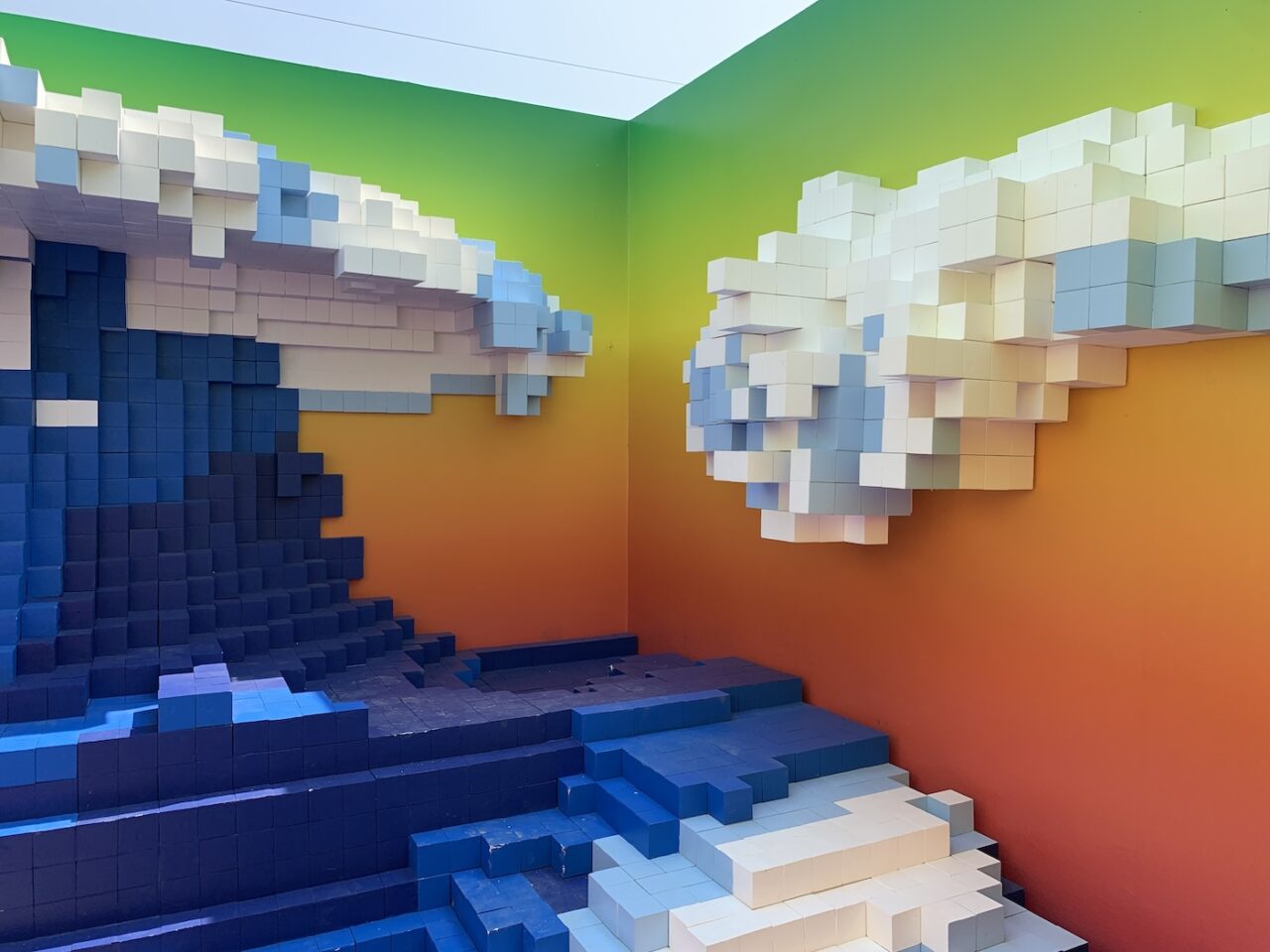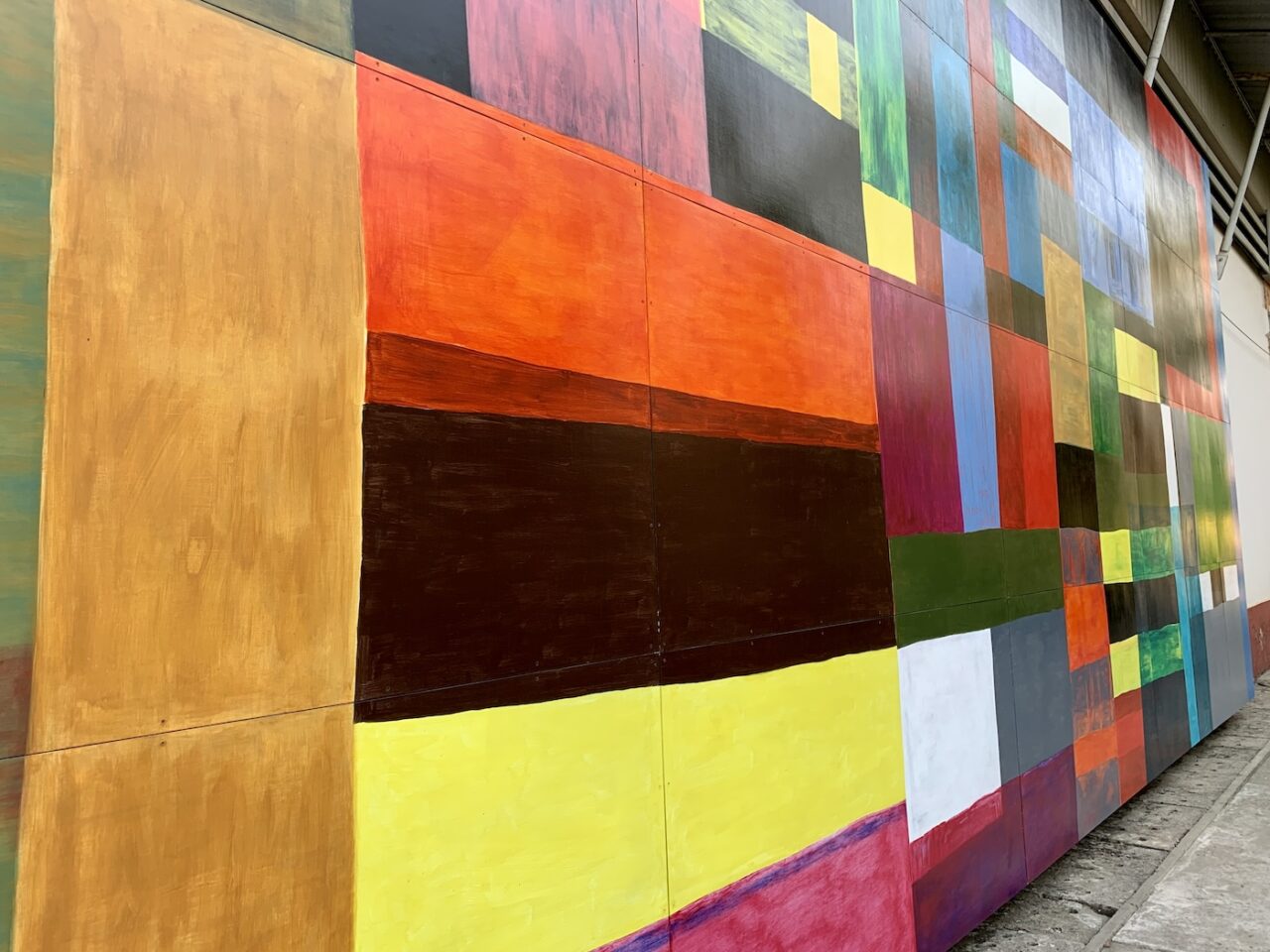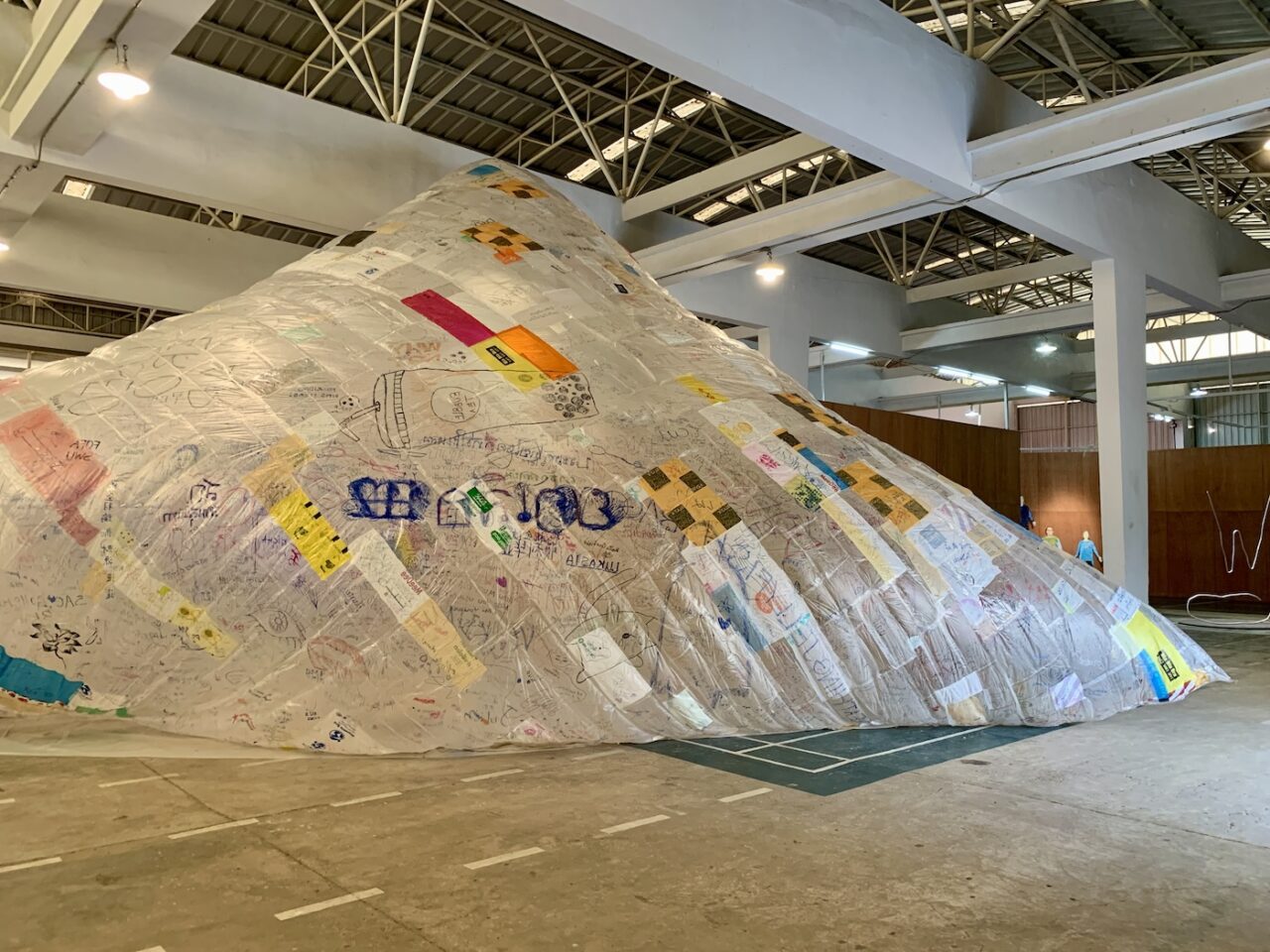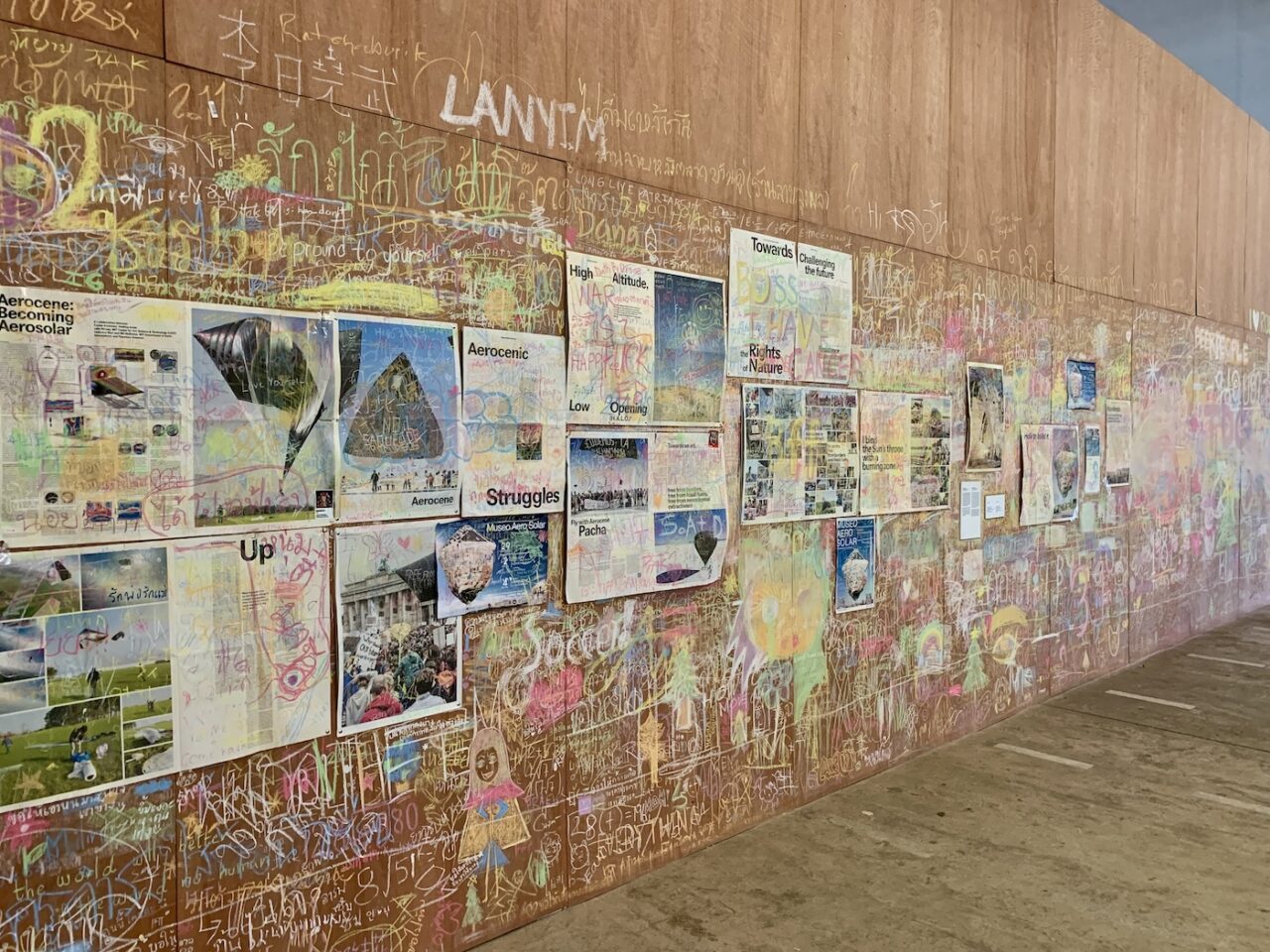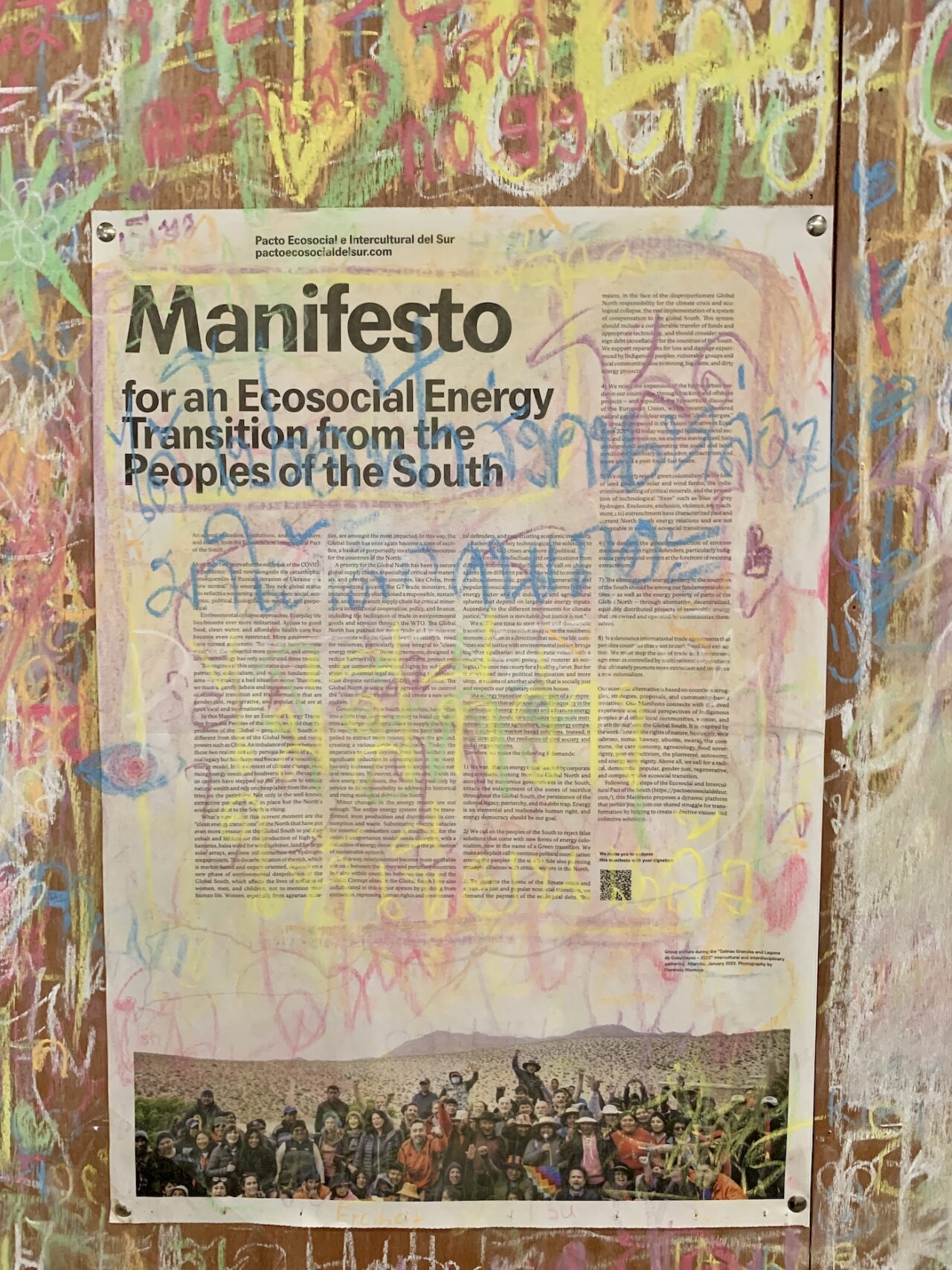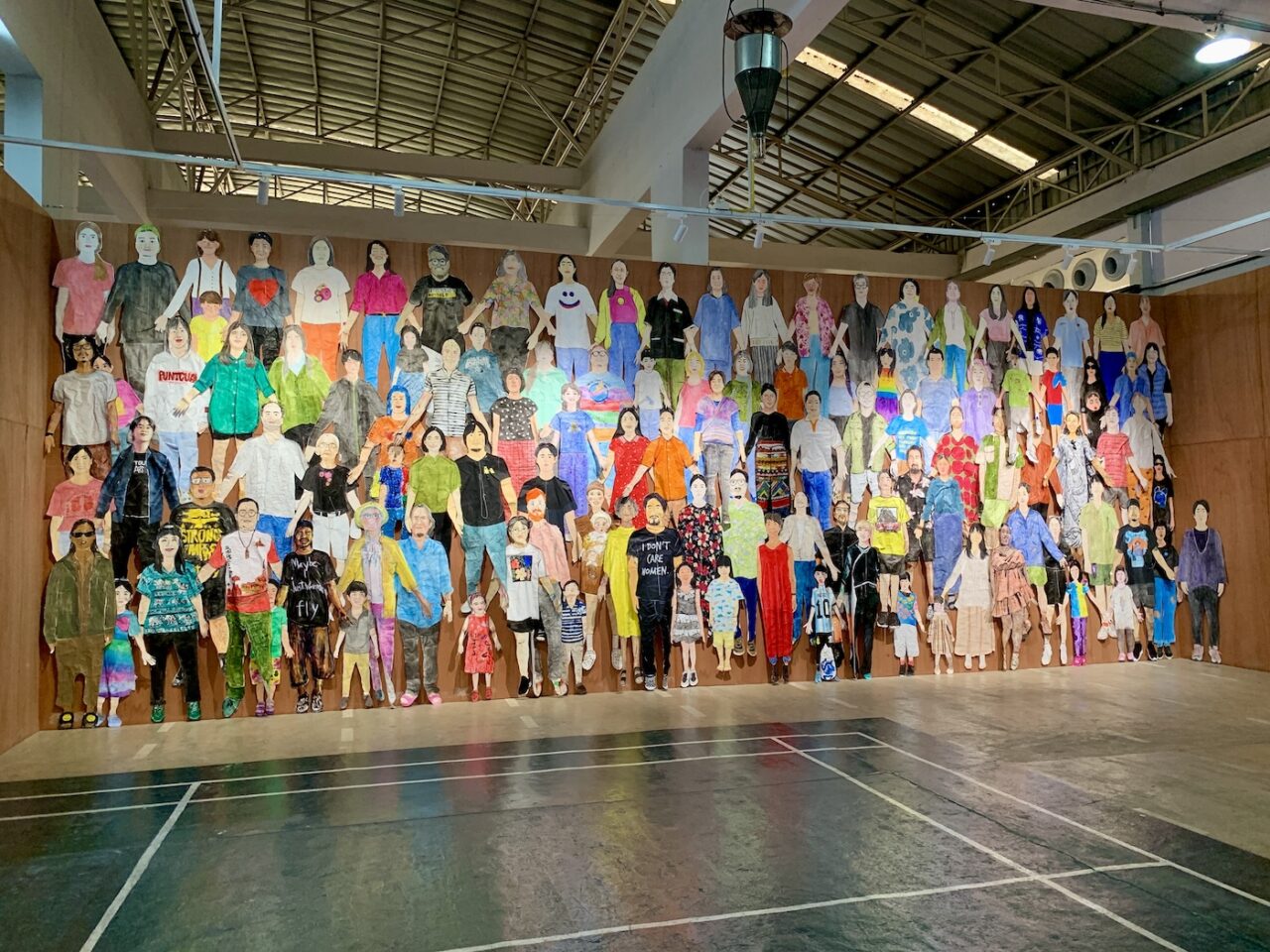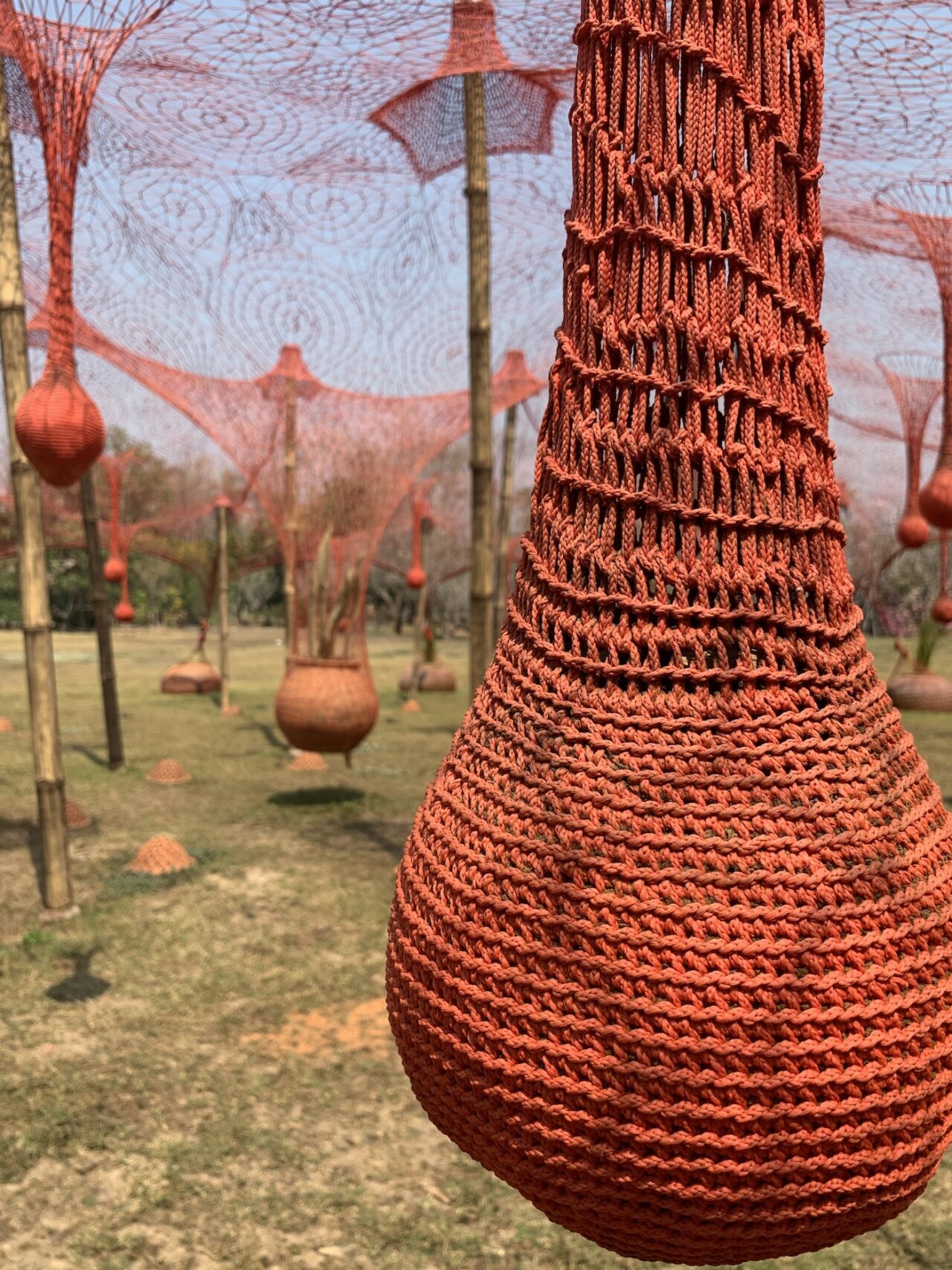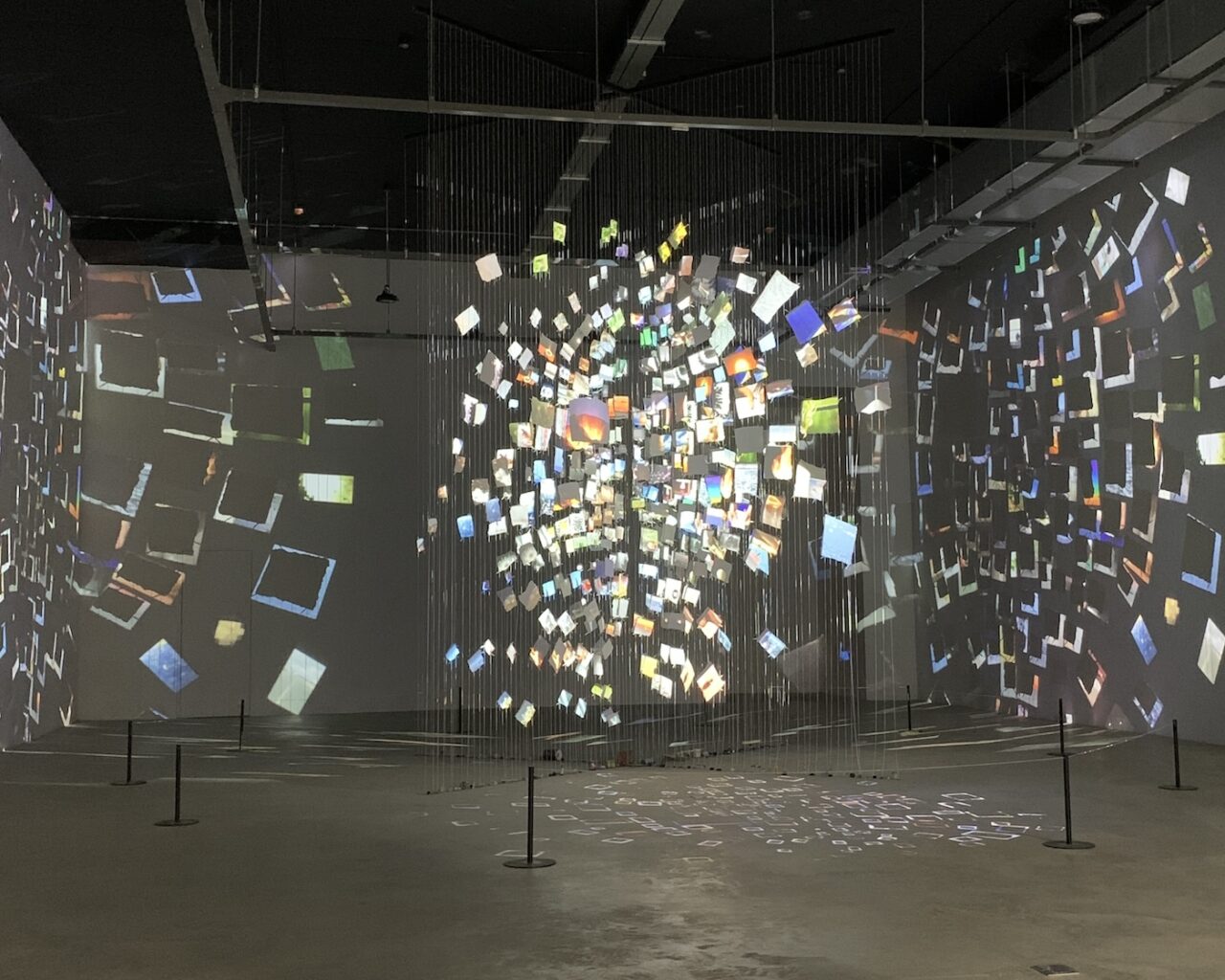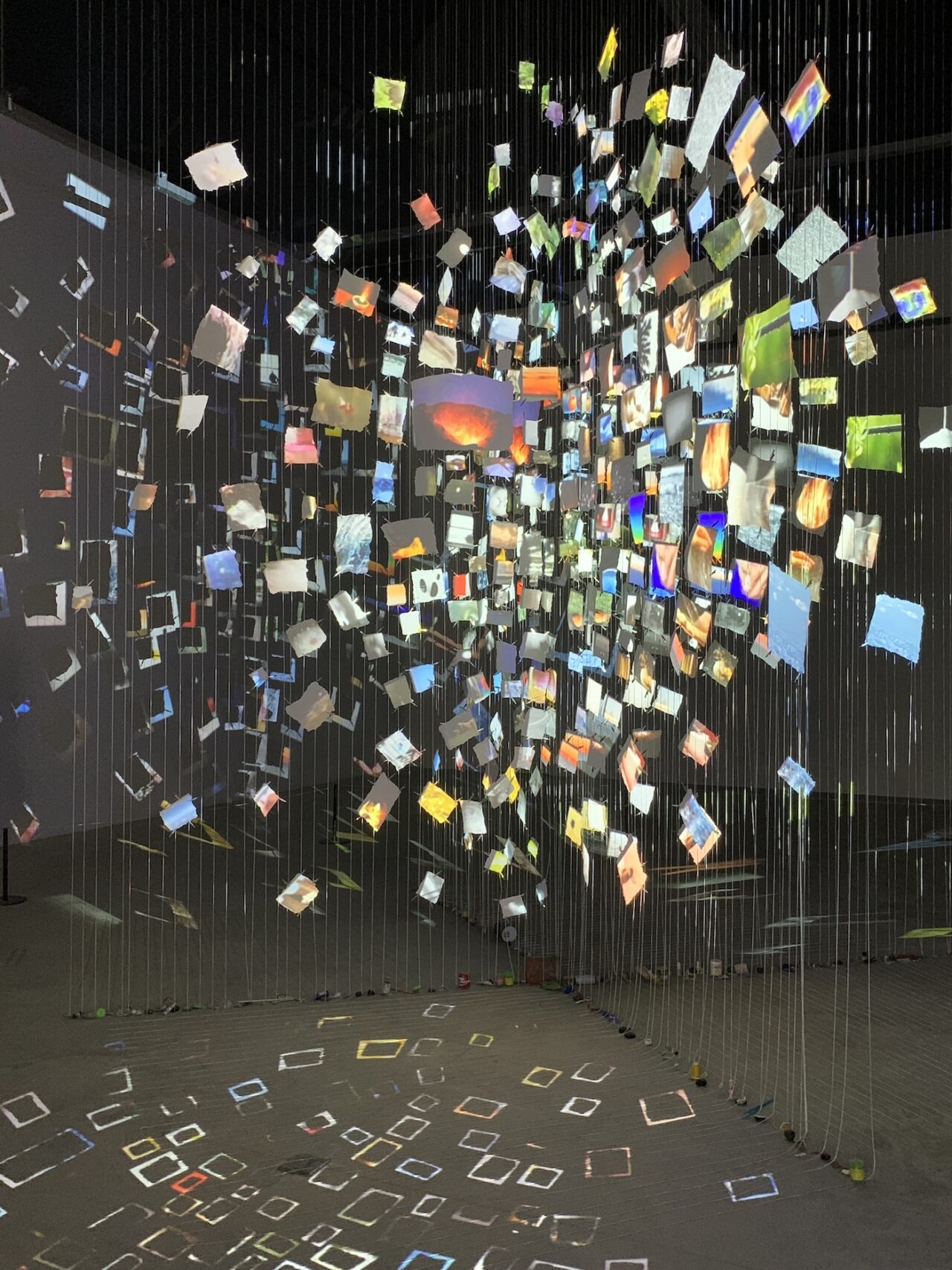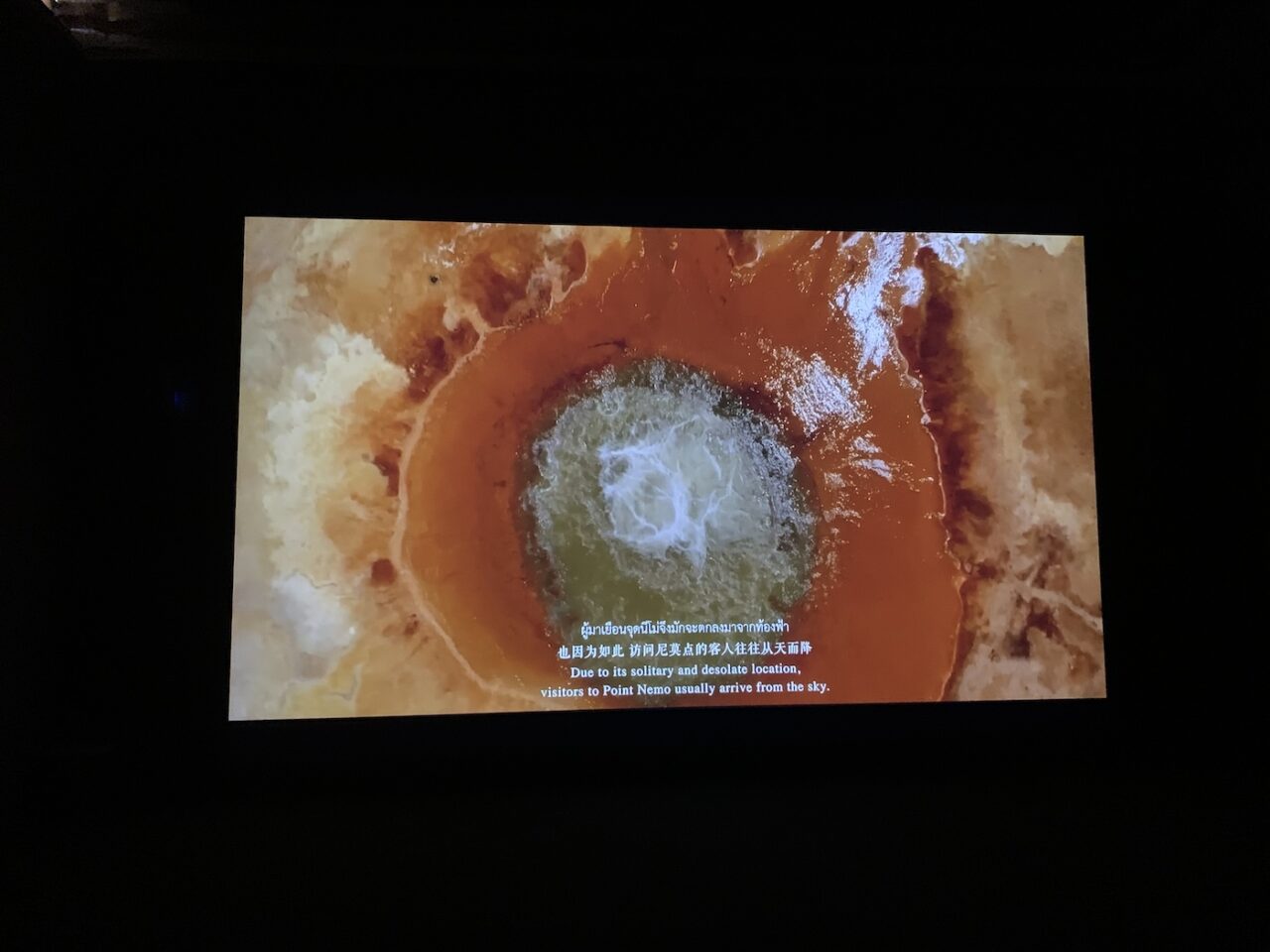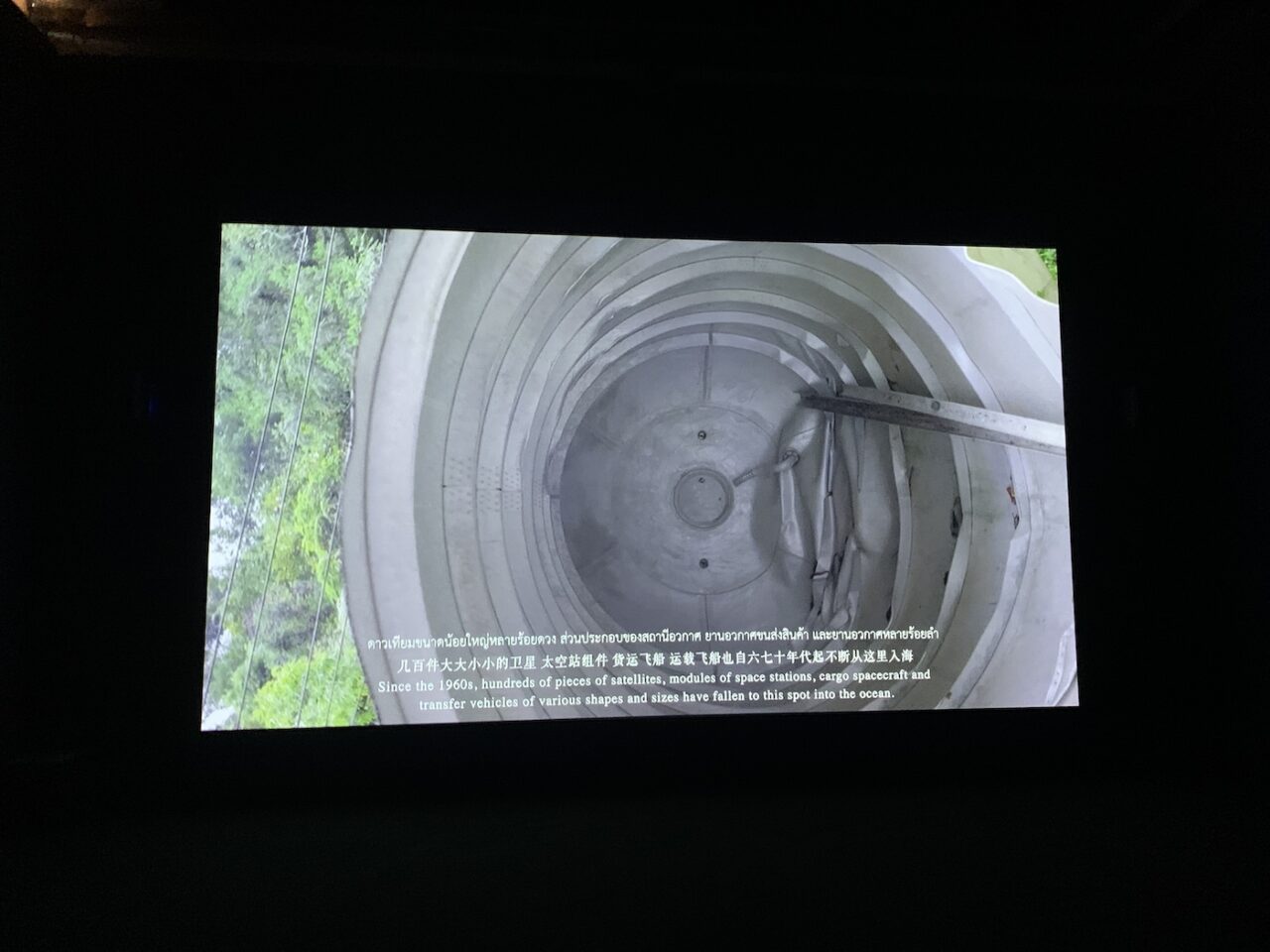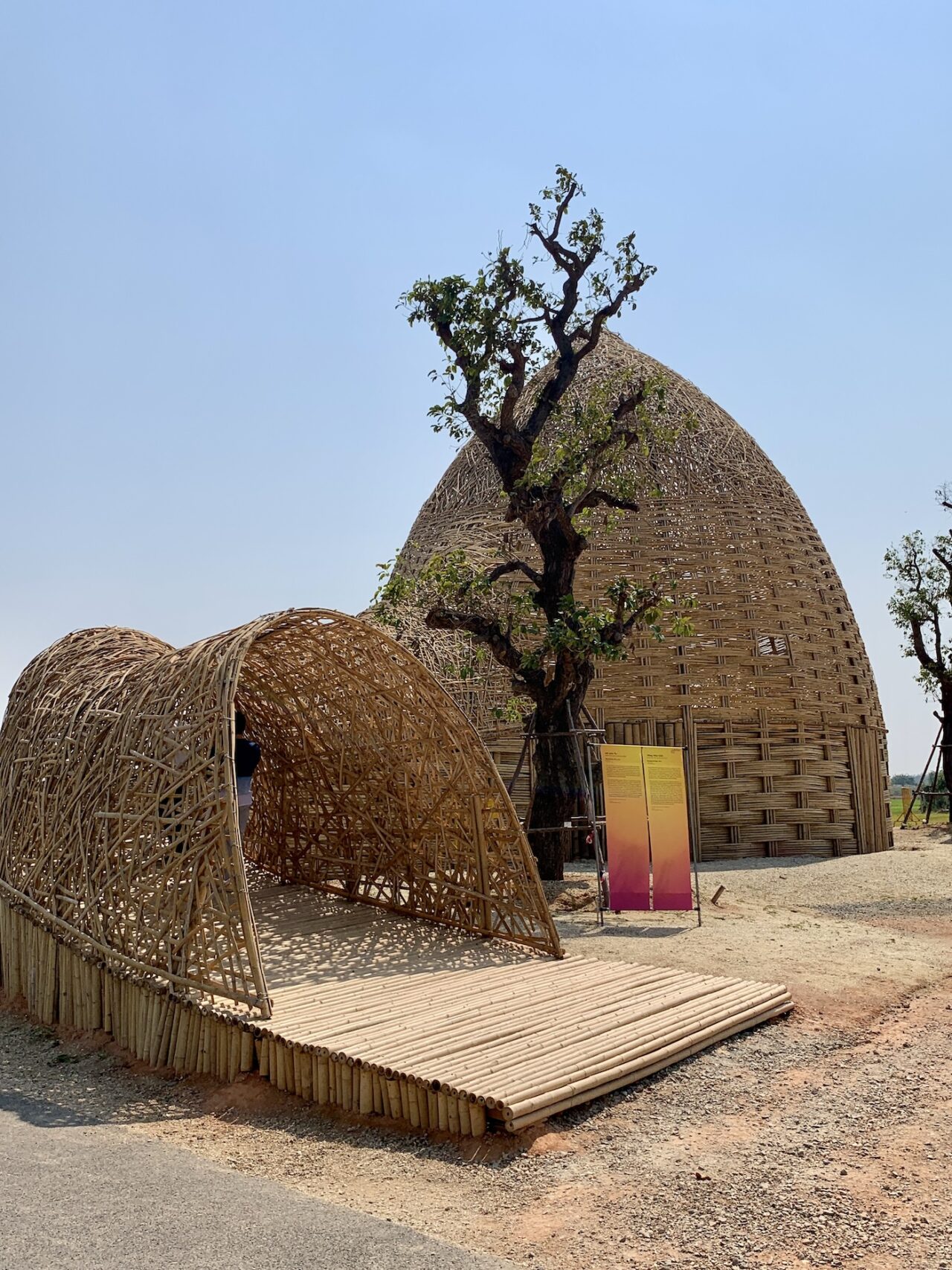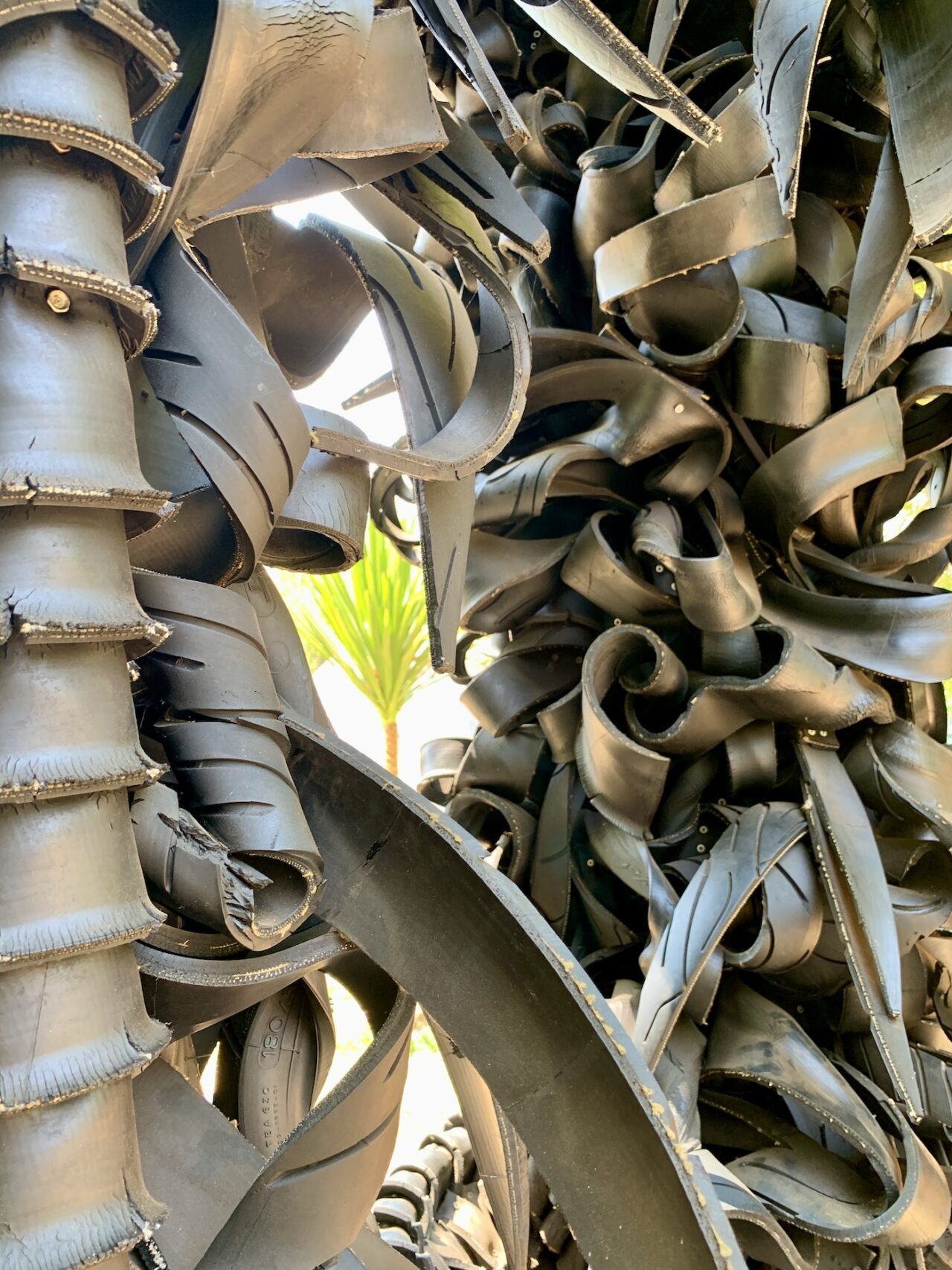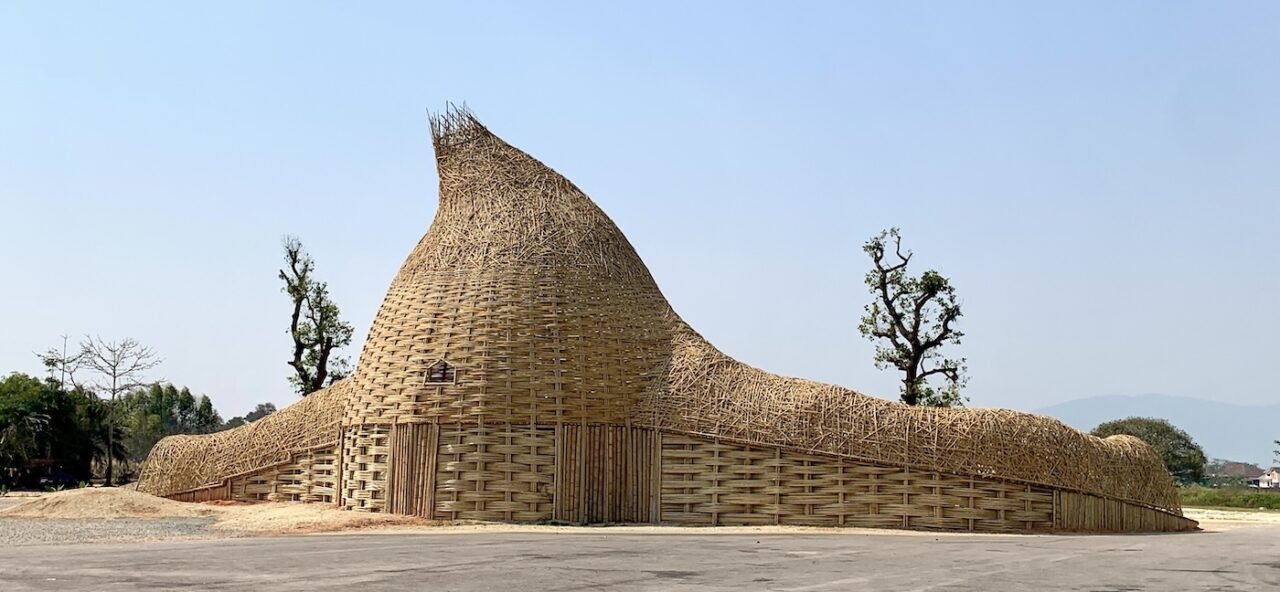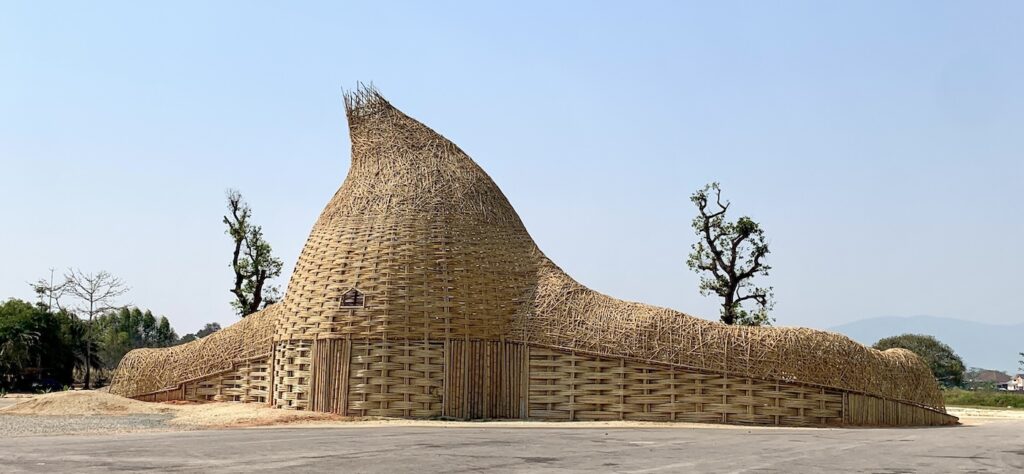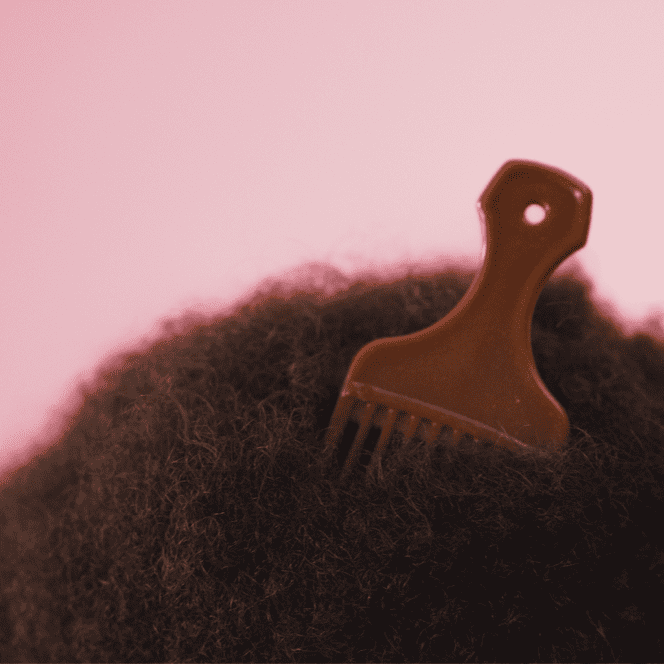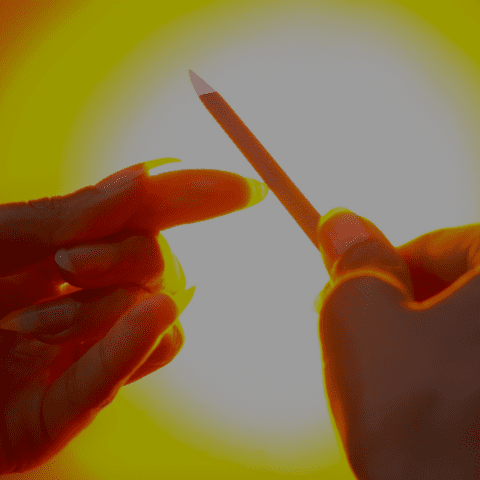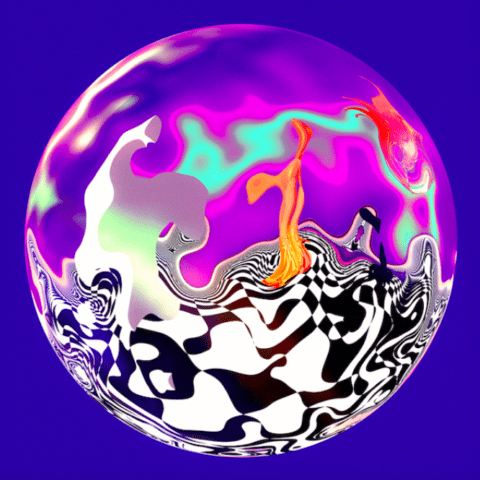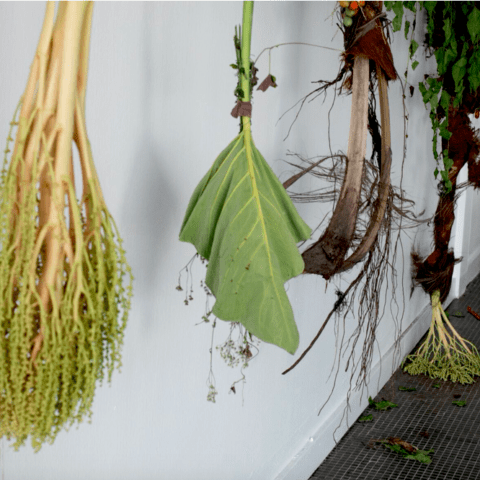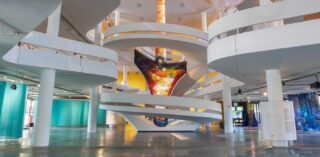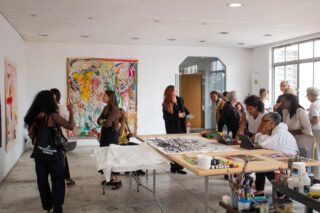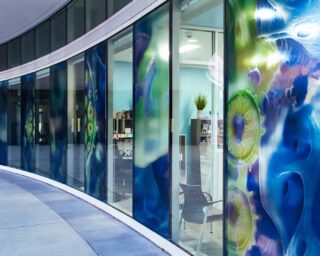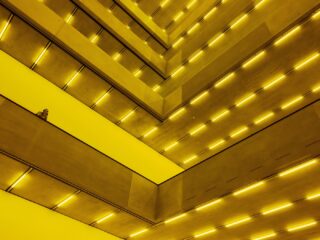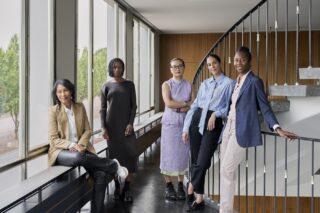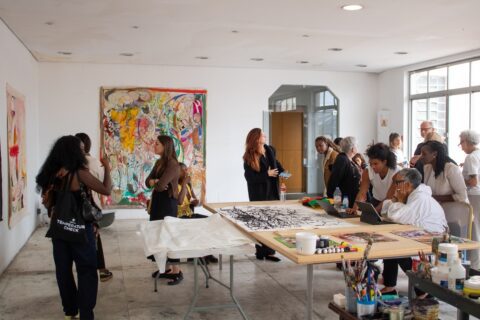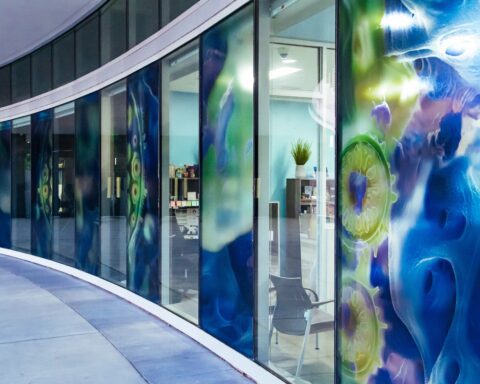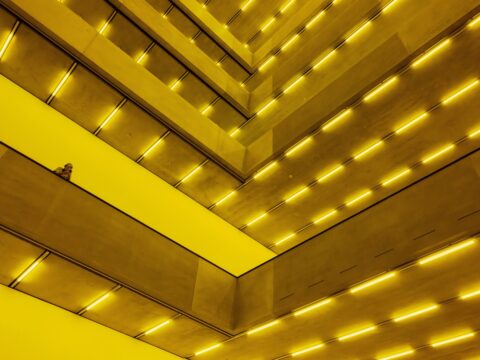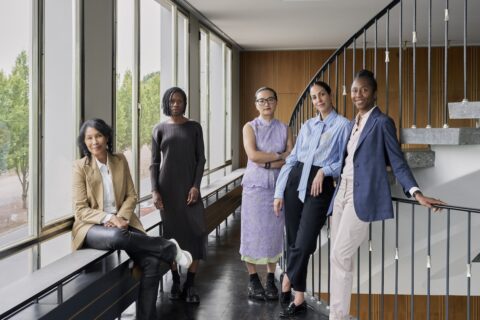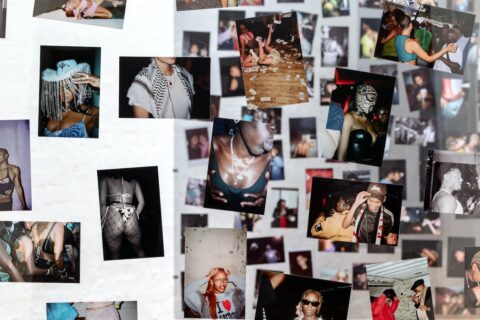This year, the Thailand Biennale will be held in Chiang Rai, a province situated at the northernmost part of the country, under the theme “The Open World”. Artistic directors Rirkrit Tiravanija and Gridthiya Gaweewong, with curators Angkrit Ajchariyasophon and Manuporn Luengaram, will collaborate in exhibiting works from Thai and international artists from the Mekong region to the Amazon and beyond. The works address topical issues such as history, cultural diversity, and nature and ecology, and will be displayed across key venues in Chiang Rai such as art galleries, exhibition halls, museums, temples, and historic sites.
The biennale emphasizes learning from the past to guide us into the future, focusing on the historical context of Chiang Saen to the vibrant present of Chiang Rai. The exhibition explores micro-histories to capture the narratives of ordinary individuals within the context of Chiang Rai and serves as a launchpad to initiate dialogues through translocalism.
Additionally, it challenges the belief systems resulting from the pre-historical state era to the present day. These narratives range from the worship of local spirits, legends and folk tales to the region’s geopolitical landscape defined by the Anthropocene.
The exhibition is on view from December 9, 2023 – April 30, 2024.
thailandbiennale.org
(left) Wang Wen-Chih, Beyond the Site, 2023. This particular artwork for the Thailand Biennale is a collaboration between artisans from Taiwan and craftsmen in Chaing Rai. It offers a spiritual exploration of self and soul, presenting a unique woldview that invites the audience to delve into the depths of their minds; (right) Chiang Rai International Art Museum (CIAM). Photo: C&
Wang Wen-Chih, Beyond the Site, 2023. The sensual experience of interacting with this artwork through site, sound, touch, taste, and smell is a way to delve deep into the inner world. Photo: C&
Wang Wen-Chih, Beyond the Site, 2023. The artwork invites audiences to expand their horizons and embrace a more open and inclusive perspective towards the Earth. Photo: C&
all(zone) / Rachaporn Choochuey, Between Roof & Floor, 2023. For this biennale, all(zone) built a gallery located in the middle of a rice field. In response to the space limitations of modern art institutions, they propose a solution that allows the gallery space to be flexible. Photo: C&
all(zone) / Rachaporn Choochuey, Between Roof & Floor, 2023. The design draws inspiration from greenhouses and also references the ration of the Kimbell Art Museum, designed by Louis I. Khan. Photo: C&
(Inside the cubes) Precious Okoyomon, A Blue Instant, a Forward Looking sky, 2023. Okoyomon created an installation to present a long-form experiential portrait of ash as a material, a process, and a force. Photo: C&
Precious Okoyomon, A Blue Instant, a Forward Looking sky, 2023. Influenced by the environmental presence and impact of ash on the region, each room offers a different permutation on the physical and conceptual resonances of the substance. Photo: C&
Tobias Regerer, Nai Nam Mee Pla, Nai Na Mee Khao, 2023. Photo: C&
Tobias Regerer, Nai Nam Mee Pla, Nai Na Mee Khao, 2023. Photo: C&
Tobias Regerer, Nai Nam Mee Pla, Nai Na Mee Khao, 2023. Photo: C&
Atta Kwami, Dzidzc kple amenuveve (Joy and Grace), 2021-2022 / 2023. Photo: C&
Atta Kwami, Dzidzc kple amenuveve (Joy and Grace), 2021-2022 / 2023. Photo: C&
Tomás Saraceno, Museo Aero Solar, 2023. Photo: C&
Tomás Saraceno, Museo Aero Solar, 2023. Photo: C&
Tomás Saraceno, Museo Aero Solar, 2023. Photo: C&
Tomás Saraceno, Museo Aero Solar, 2023. Photo: C&
Tomás Saraceno, Museo Aero Solar, 2023. Photo: C&
Tomás Saraceno, Museo Aero Solar, 2023. Photo: C&
Shimabuku, Flying People, 2023. Photo: C&
Shimabuku, Flying People, 2023. Photo: C&
Maria Thereza Alves, Curing Dismembered Knowledges, 2023. For the biennale, Alves focuses on the non-gone forest of the Kok River. Through research in the archives within Thailand and the colonial powers within Europe. she finds traces of the forest and translates them into an installation. In cooperation with Sutti Malithong, biologist form Chiang Rai Rajabhat University. Photo: C&
Maria Thereza Alves, Curing Dismembered Knowledges, 2023. The Kok River Forest was destroyed for the extraction of Teak Trees to supply the international market. Alves research resulted in the addition of dozens of flora to the list compiled by Sutti Malithong. Find the full list here: https://drive.google.com/file/d/1y7VwtY-gBOnb6iTD6AOZM9vuGnuEYRXk/view. Photo: C&
Busui Ajaw, Mor Doom and Ya Be E Long, 2023. This installation is designed to preserve the Akha heritage and traditional wisdom through eight paintings on a vast piece of animal skin. Photo: C&
Busui Ajaw, Mor Doom and Ya Be E Long, 2023. Photo: C&
Busui Ajaw, Mor Doom and Ya Be E Long, 2023. Photo: C&
Chakaia Booker, What’s Not, 2009. Booker’s contribution consist of displaying an existing work – using the rubber tire, speaks on topics of environmental destruction, socioeconomic disparity, and access to technology as it relates to modes of transportation. Photo: C&
Chakaia Booker, What’s Not, 2009. Photo: C&
Kamonlak Sukchai, Red Lotus, 2019. This artwork is based on the folktale of Nang Boa Dang (Red Lotus), a young lady who was floating along the river and was forced by the governor to stay with a hermit in the forest. This demonstrates the social structures that keep women from having the freedom to make decisions. Photo: C&
Kamonlak Sukchai, Red Lotus, 2019. Photo: C&
Ernesto Neto, Chantdance, 2023. Neto’s works are deeply influenced by his Brazilian heritage, drawing from indigenous traditions, Brazilian Modernism, and his interest in the relationship between the body and the environment. Photo: C&
Ernesto Neto, Chantdance, 2023. For the biennale, Neto created an installation that offers an environment of communion and meditation, inspired by his research trip in Chiang Rai to Wat Mung Muang (Temple). Photo: C&
Ernesto Neto, Chantdance, 2023. Photo: C&
Ernesto Neto, Chantdance, 2023. Photo: C&
Ryusuke Kido, Inner Light – Chiang Rai Rice Barn, 2023. Kido collaborated with local craftsman Kamjan Yano. He carves a rice barn from 80-year-old teak, retired from peasant culture. Photo: C&
Ryusuke Kido, Inner Light – Chiang Rai Rice Barn, 2023. The sculpture appears as if it were being eroded by a virus or bacteria, creating interior spaces that blur the boundary of form. Photo: C&
Ryusuke Kido, Inner Light – Chiang Rai Rice Barn, 2023. Photo: C&
Citra Sasmita, Timur Merah Project X: Theater in the Land of the God and Beast, 2023. This artwork revolves around a story of Goddess Kadru, who gives birth to a thousand nagas or snakes. Photo C&.
Citra Sasmita, Timur Merah Project X: Theater in the Land of the God and Beast, 2023. Photo: C&.
Tarek Atoui, The Wind Harvesters, 2023. Inspired by the water irrigation systems of rice fields, this sound installation is made of bamboo sections into which traditional wind instruments of the Akha and Lisu were mounted and tuned. Photo: C&
